Holy cow. I hate you as bad as Merriman. Didn't think it possible.
USS Nautilus - Final Edition
Collapse
X
-
After everything has been glued into place, fill and sand. Then all parts have to be prepared for the base coat. All surfaces are wet sanded with 600-grade sandpaper. This also includes the control planes.
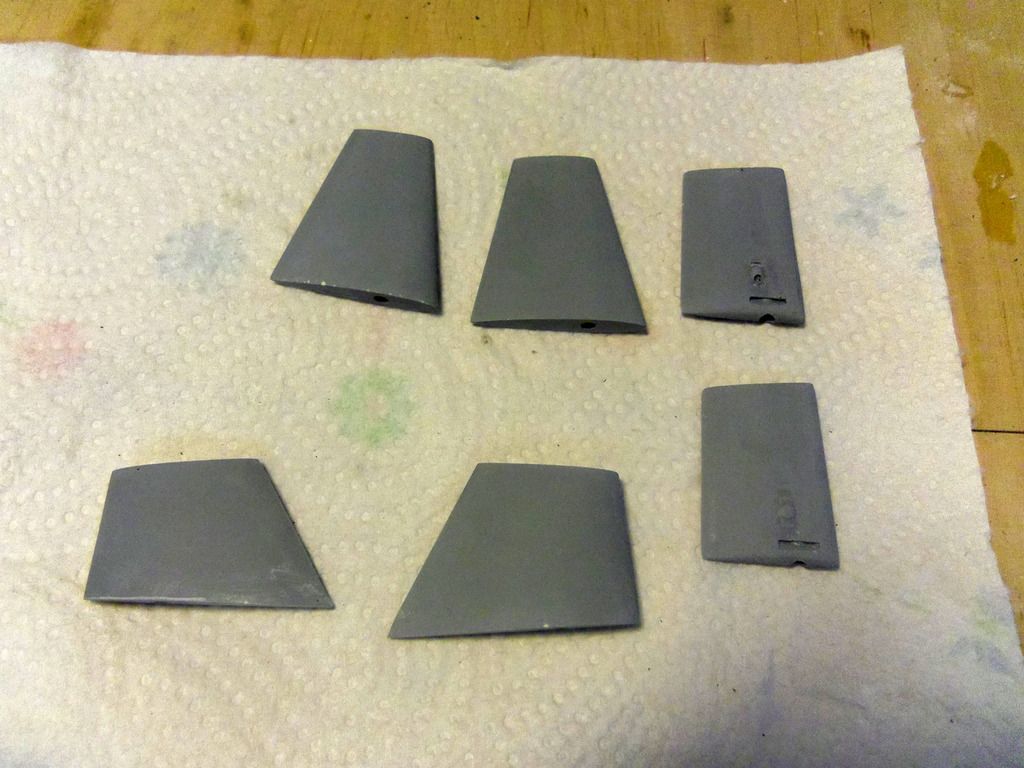
When everything is sanded, all surfaces are thoroughly cleaned of dust and then degreased using silicone remover.
The parts that mustn’t be painted are masked suing masking tape. Then all parts are fixed for the painting using auxiliary mounts.
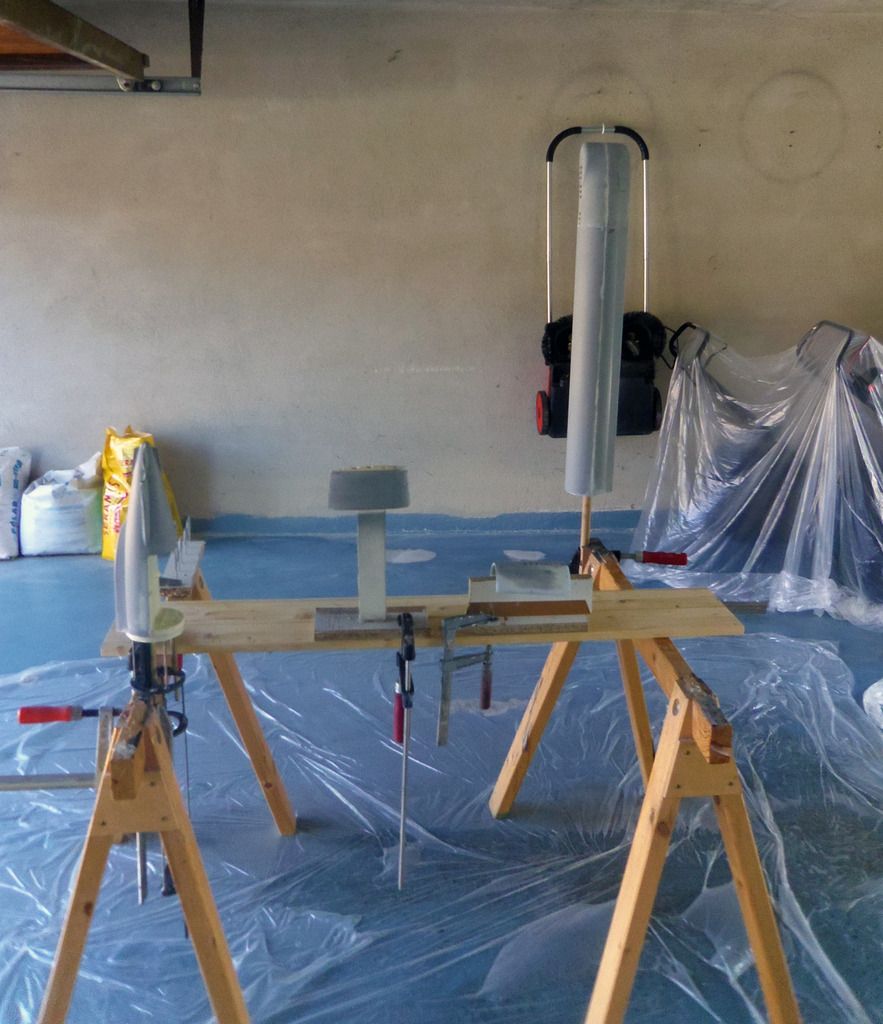
I use Südwest Allgrund 2-component filler/primer for the base coat, which I mix with 15% thinner (long). I apply the coat using a Satajet B (1,35 mm nozzle). It is important to thoroughly clean the room in which the paint is applied (here a garage) from dust and to clean all surfaces near the parts that are going to be painted using a wet cloth. The we are ready to go. Important: Use a breathing mask!!! Here the result:
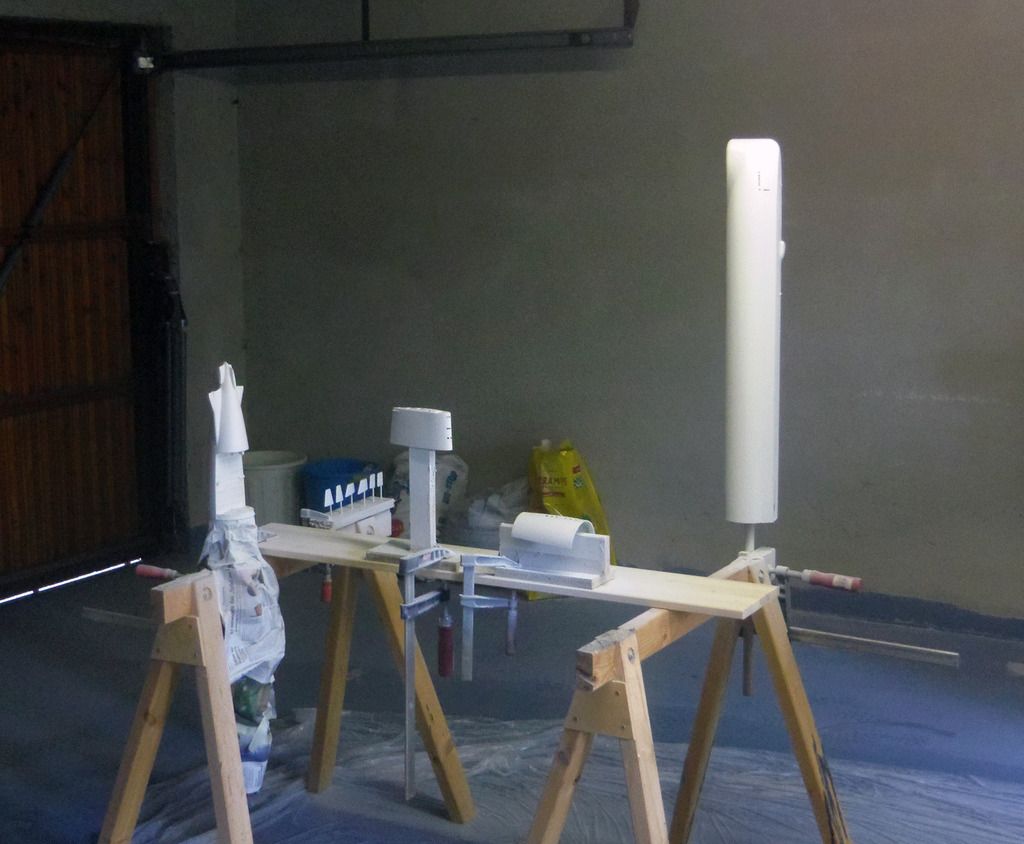
Now the remaining micro pores can be filled and then again everything is wet sanded using 600-grade sandpaper.
Comment
-
The sail has been sanded down wet using 600-grade sandpaper. Now the surface details can be applied. First the handrails:
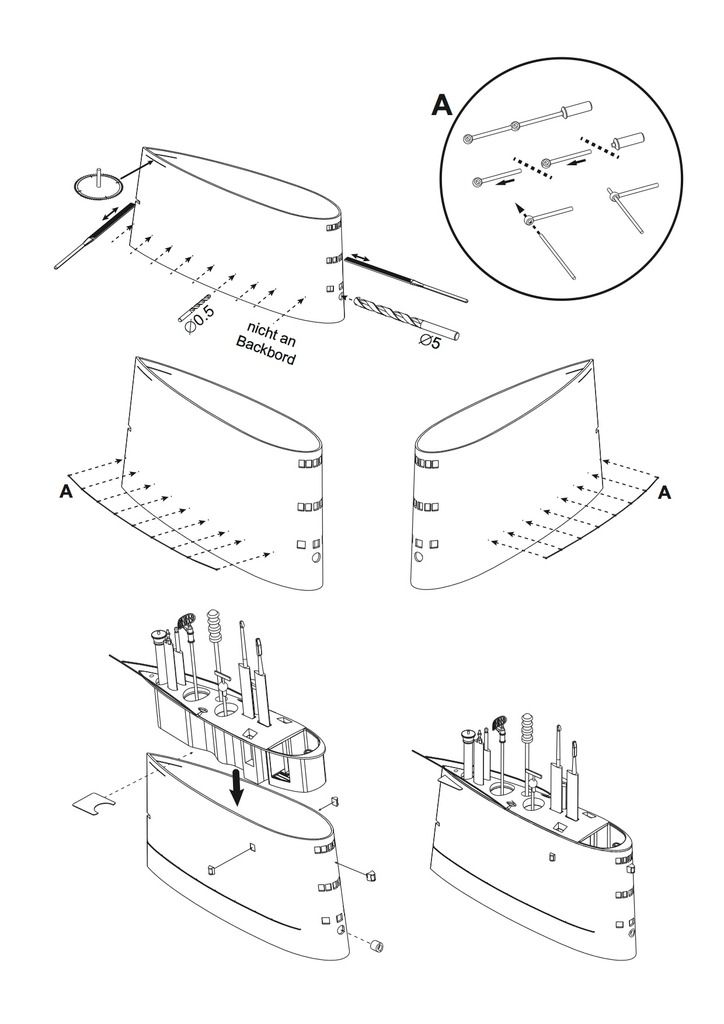
One needs 0,3 mm diameter spring steel wire, 0,5 mm diameter rail posts and a 0,5 mm diameter drill bit:
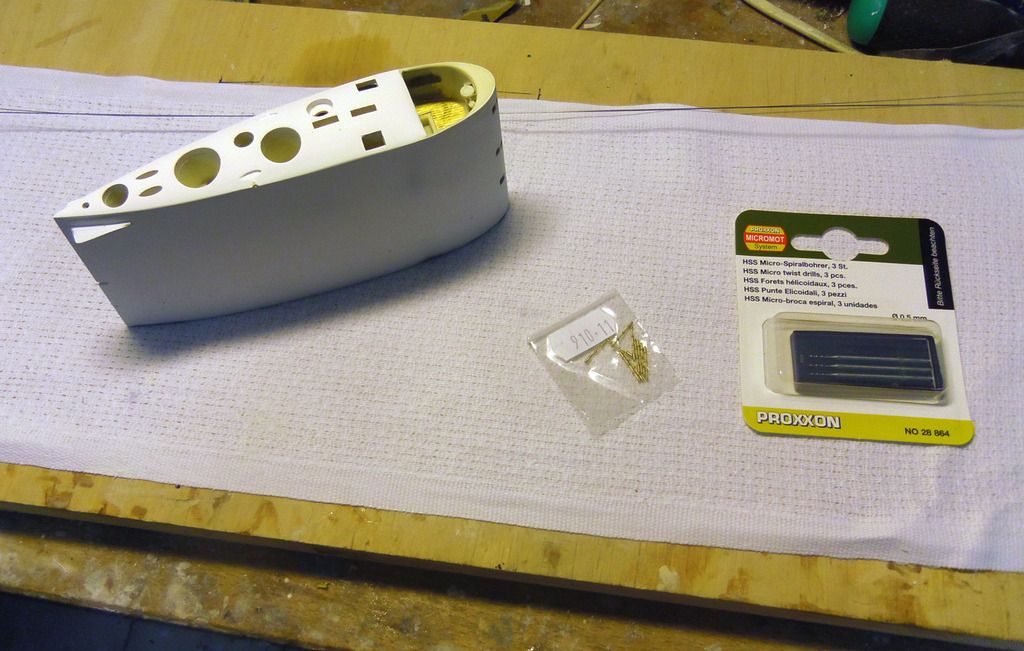
I chose rail posts for three rails. The holes for the rails are 0,4 mm diameter:
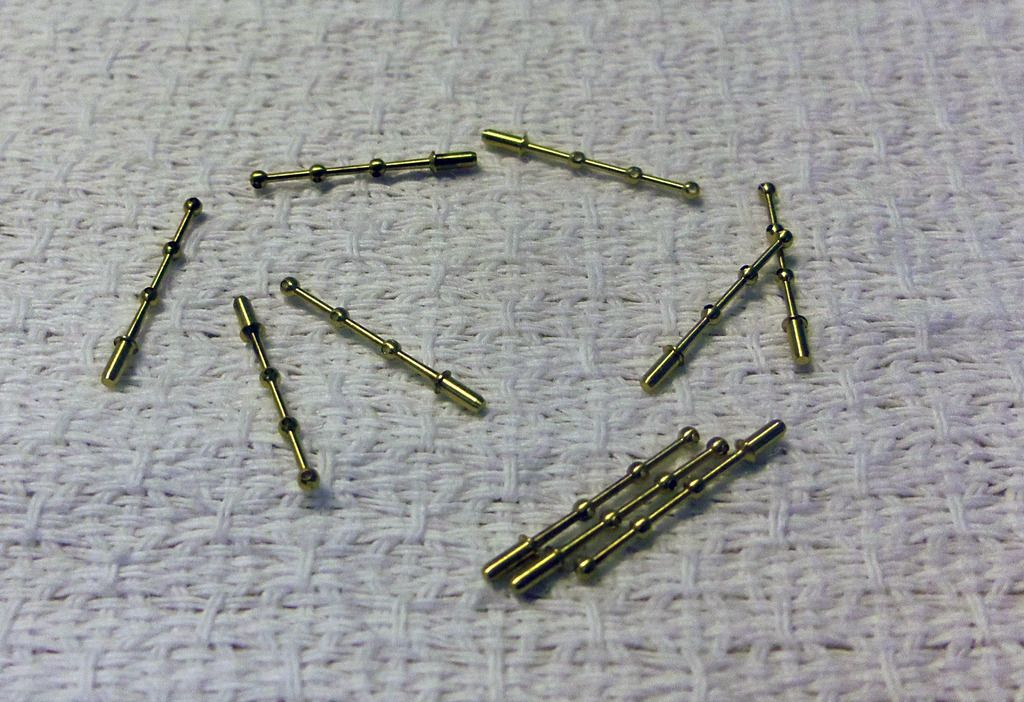
The 0,5 mm diameter holes are drilled into the sail at the already marked positions:
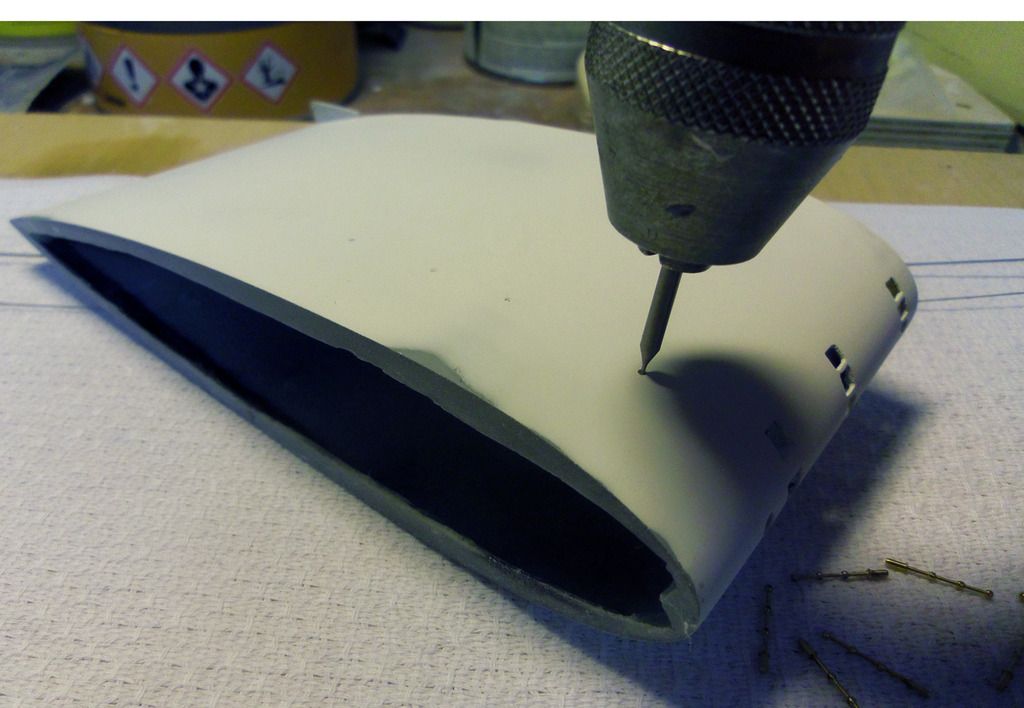

The rail posts are cut into single rail posts:
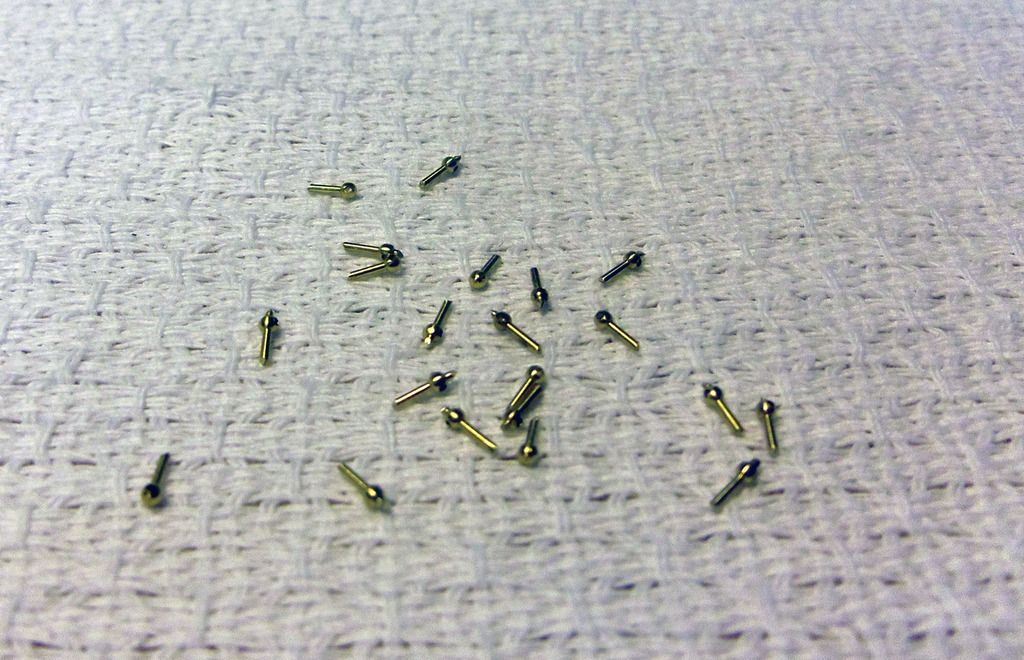
The heads of these single rail posts are filed flush (good needle-nose pliers, needle files, 600-grade sandpaper and lots of patience!). Then the single posts are threaded onto the steel wire. The wire is angled 90° at one end:
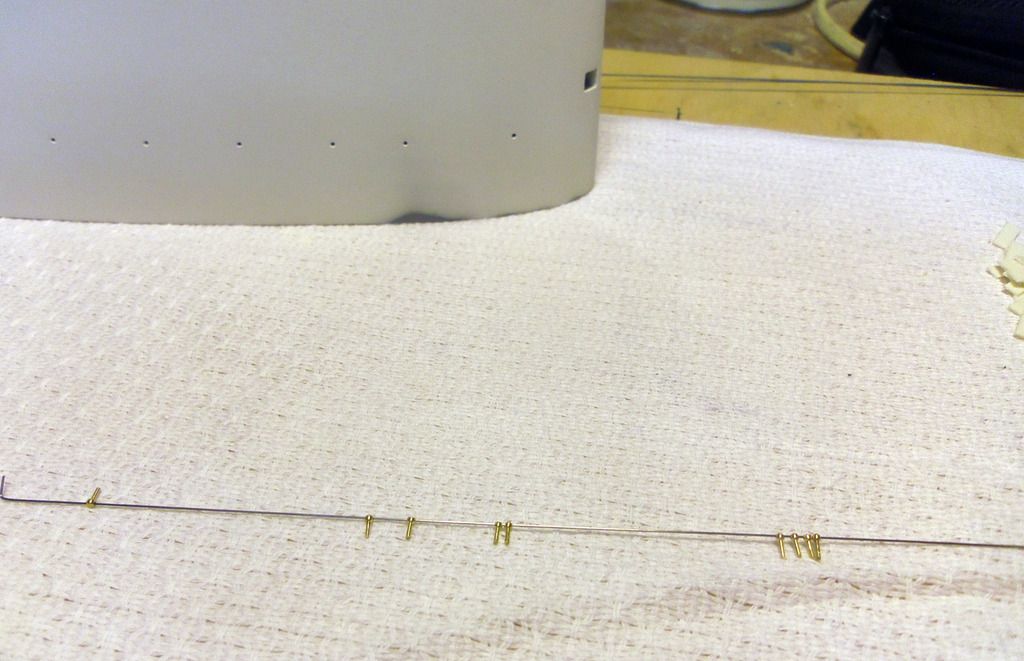
Comment
-
Then everything is put into the respective holes, while 0,5 mm thick styrene sheets serve as spacers:
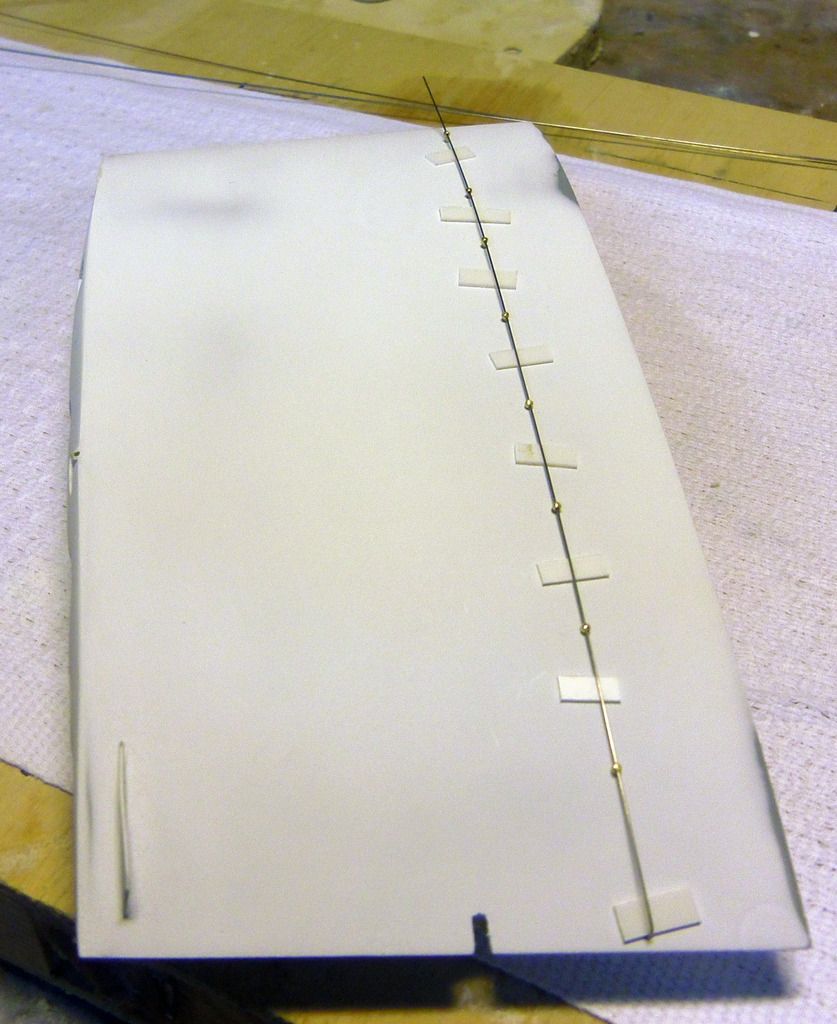
Fix everything using masking tape:
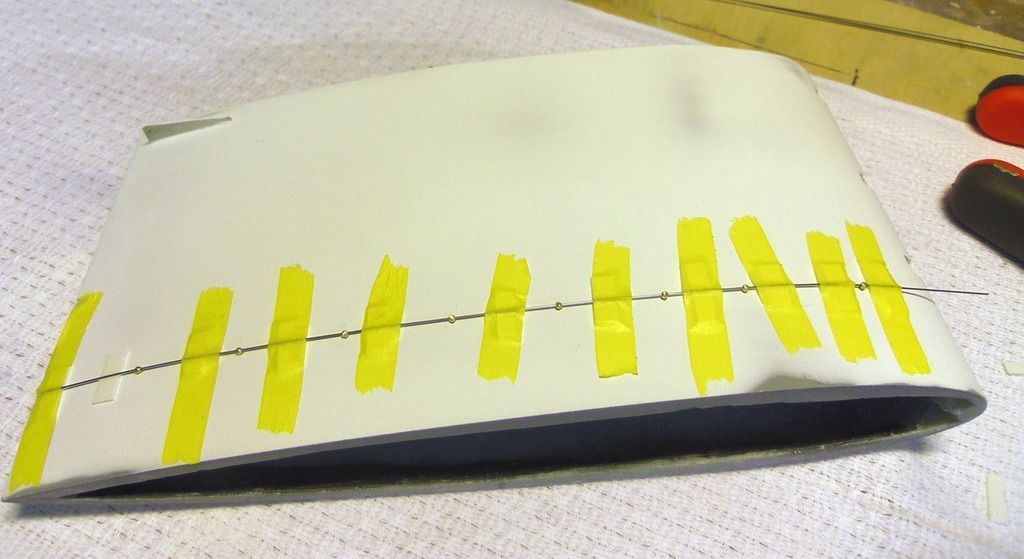
Now everything can easily be glued into place using superglue (apply glue to the posts and the connections of the wire with the posts. Remove the spacers and cut the wire flush with the last post in the front:
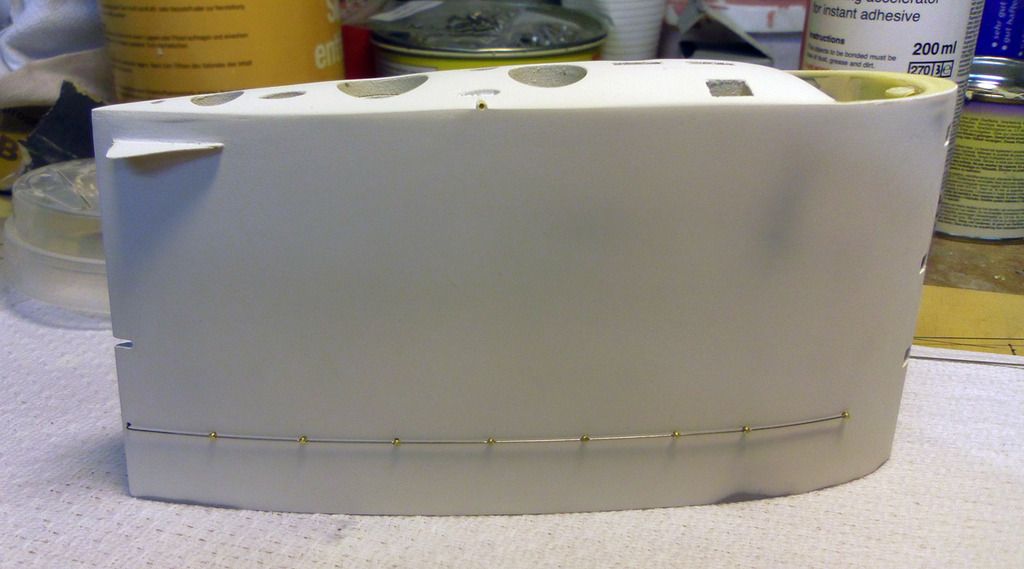
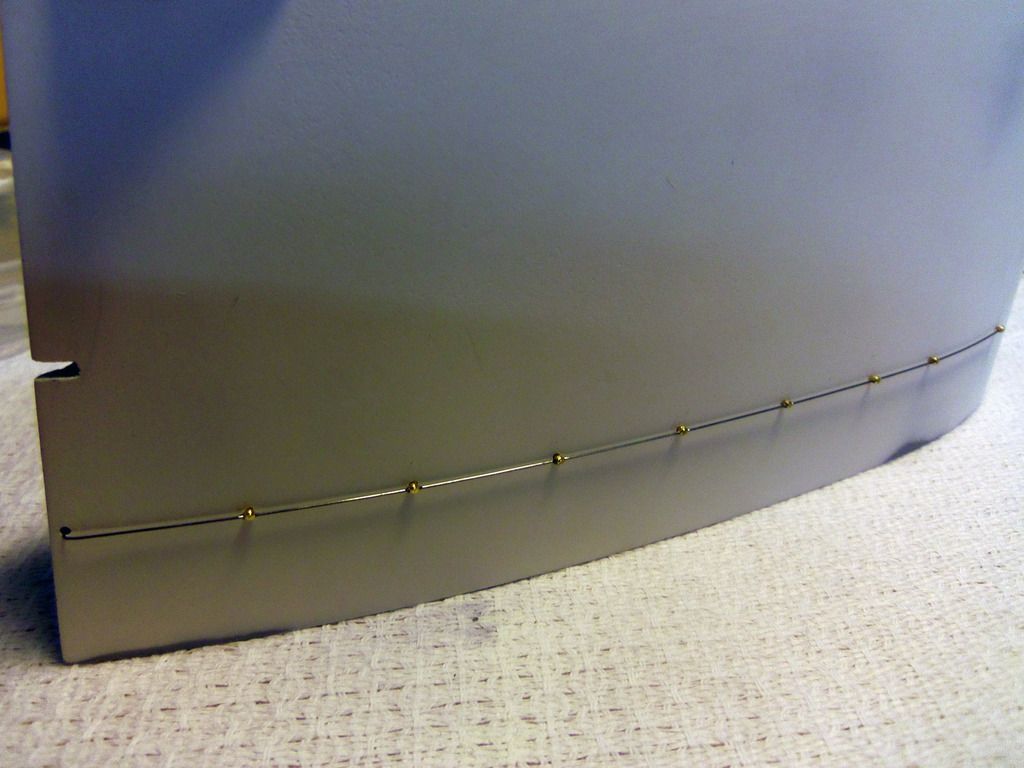
Same on the other side, just one rail post less:
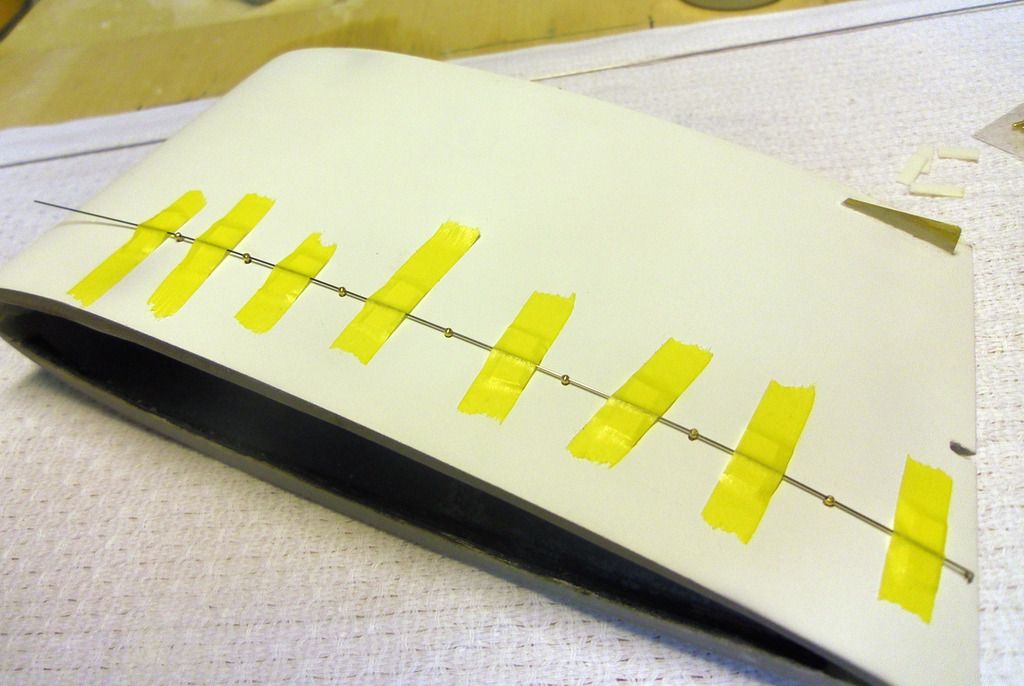
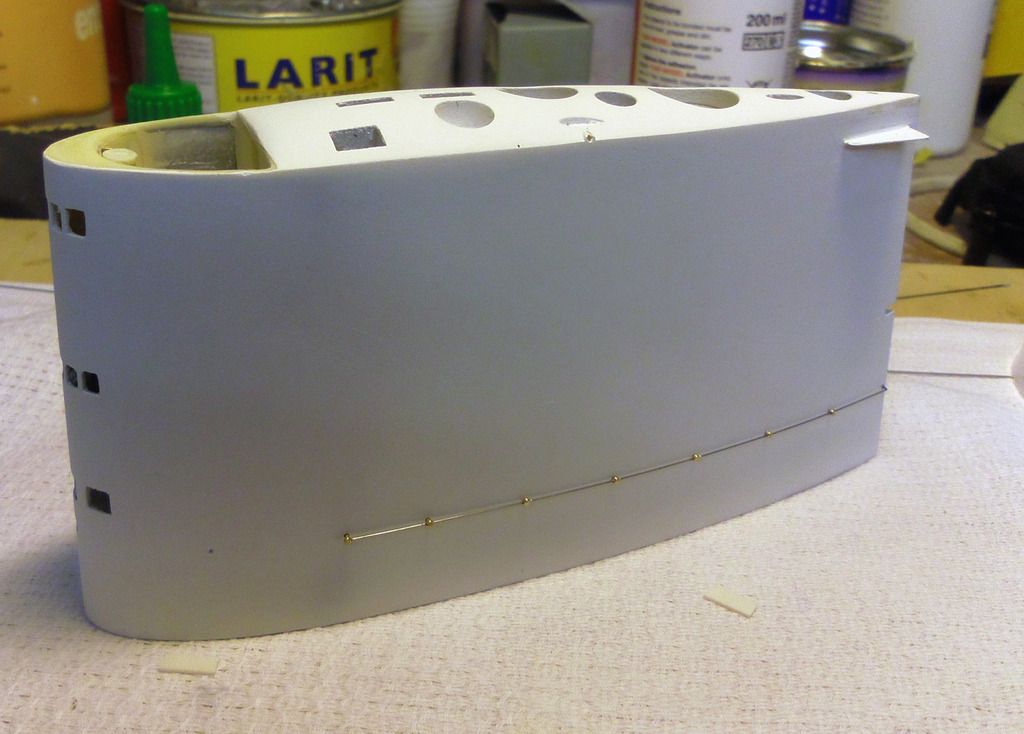
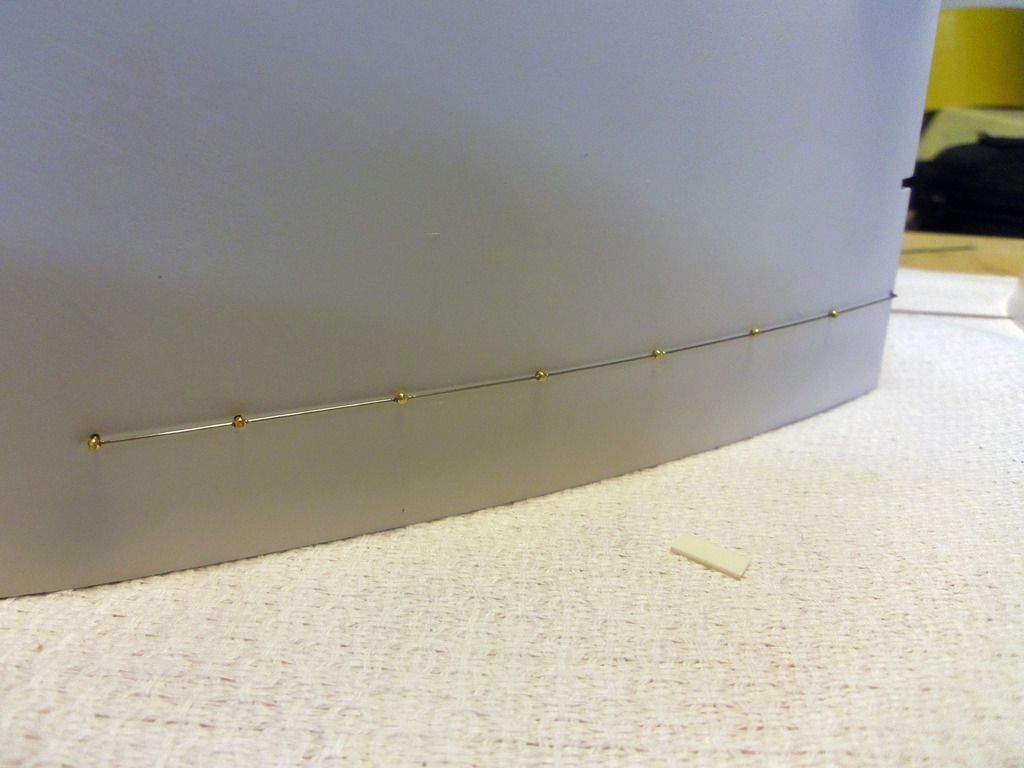
Comment
-
On the left and right side of the sail position lights are located. The position lights are cast of PU resin:
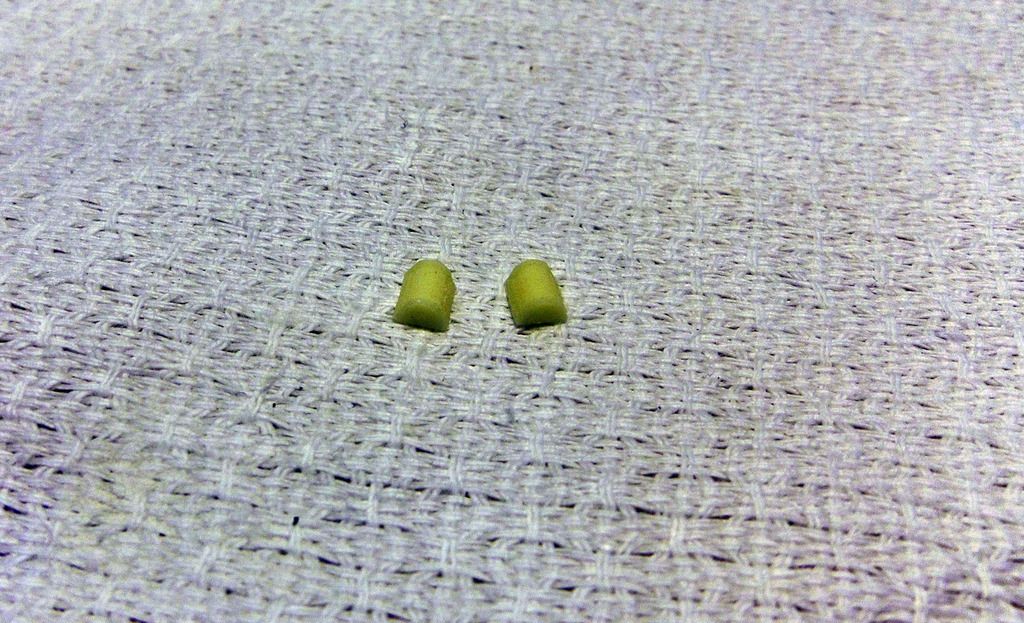
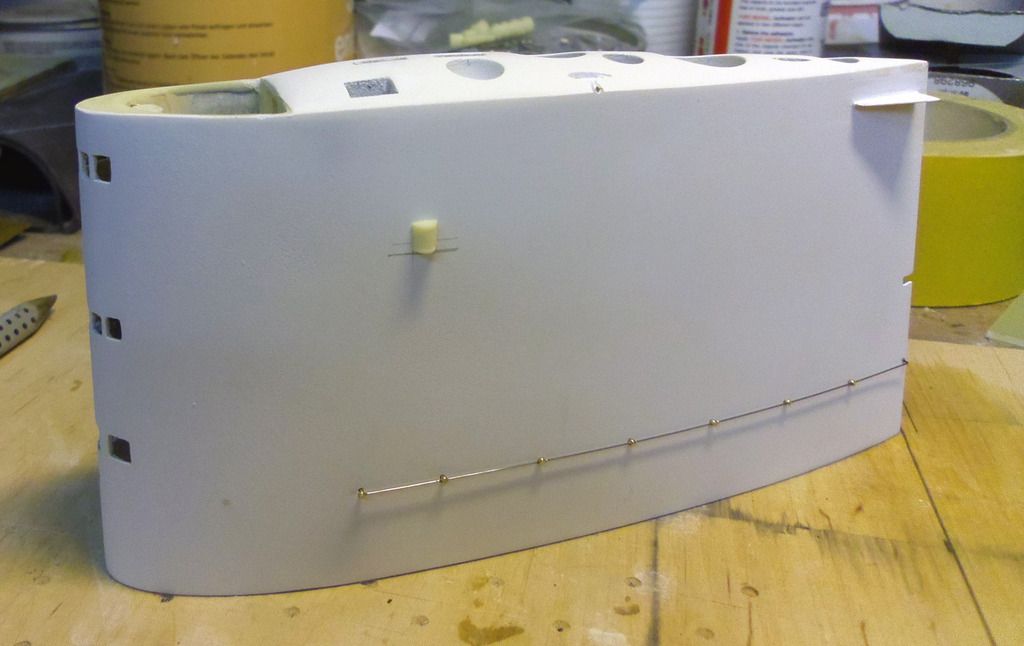
Finally a door is scribed on the port side of the sail using a 0, 5 mm thick styrene mask. To scribe the lines, I used a 0,5 mm diameter steel wire:
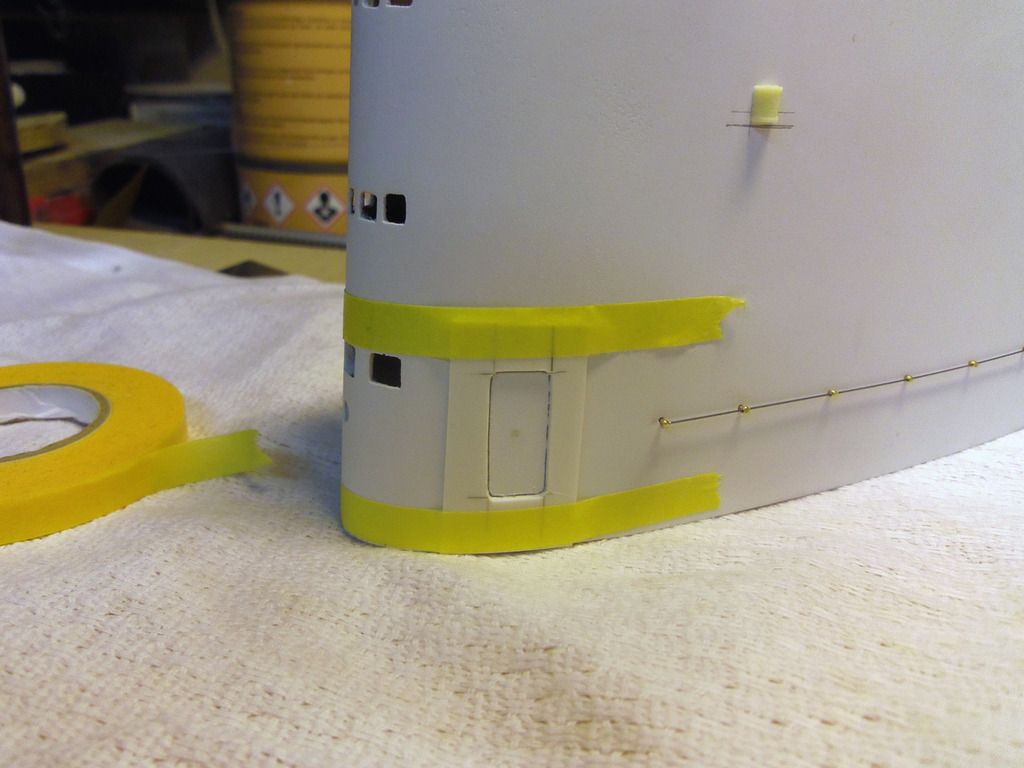
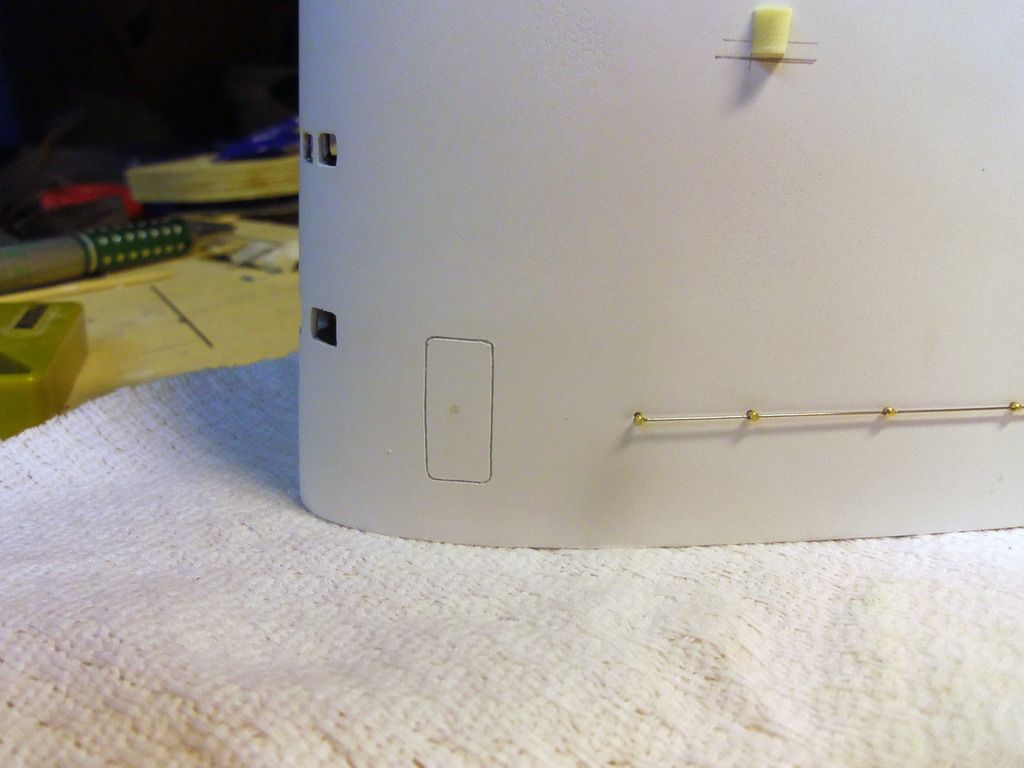
Now the sail is ready for the top coat:
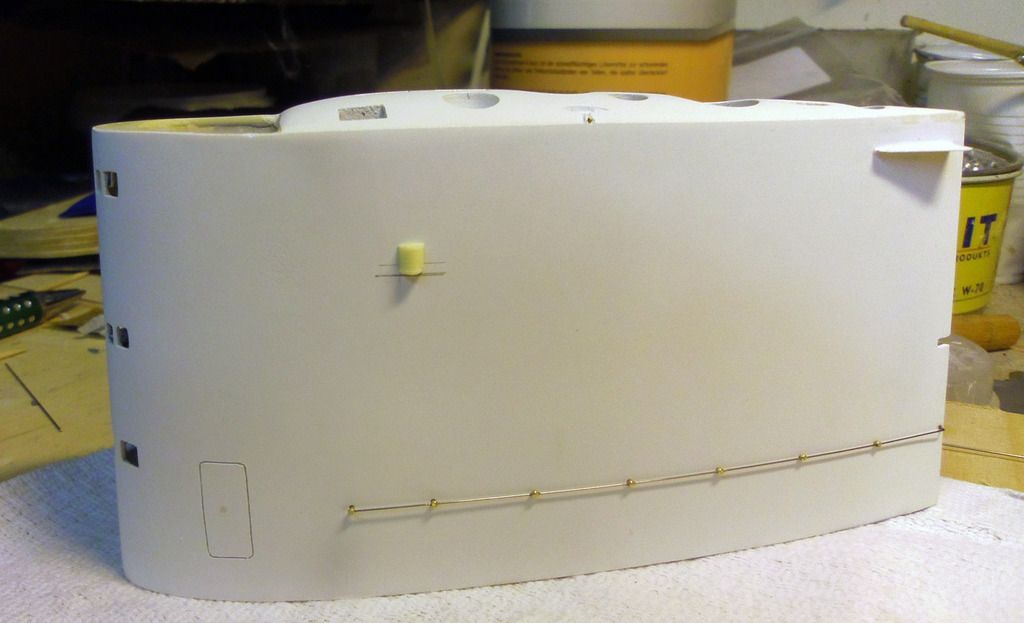
Comment
-
Next are the surface details on the hull. Here it’s mainly about weld lines and rivets.
A few comments about those details: On many boats one sees weld lines and rivets, often very prominent, too often way too big. Here it is often useful to think a bit about the scale o the boat. My Nautilus is built 1:87 scale (H0). I apply weld lines of 0.3 mm width, which would make them 2.6 cm wide on the original. That’s already quite big. Many rivets I had on model submarines would be as big as soccer balls, weld lines as wide as 10 cm. Sometimes less is more.
For the weld lines I use decals with resin relief, so called surface details from Archer Fine Transfers. What they are and how they are applied is demonstrated here:
The markings for the weld lines are applied like as follows: The hull will get a segment weld every 10 cm. This grid is drawn on a straight board.
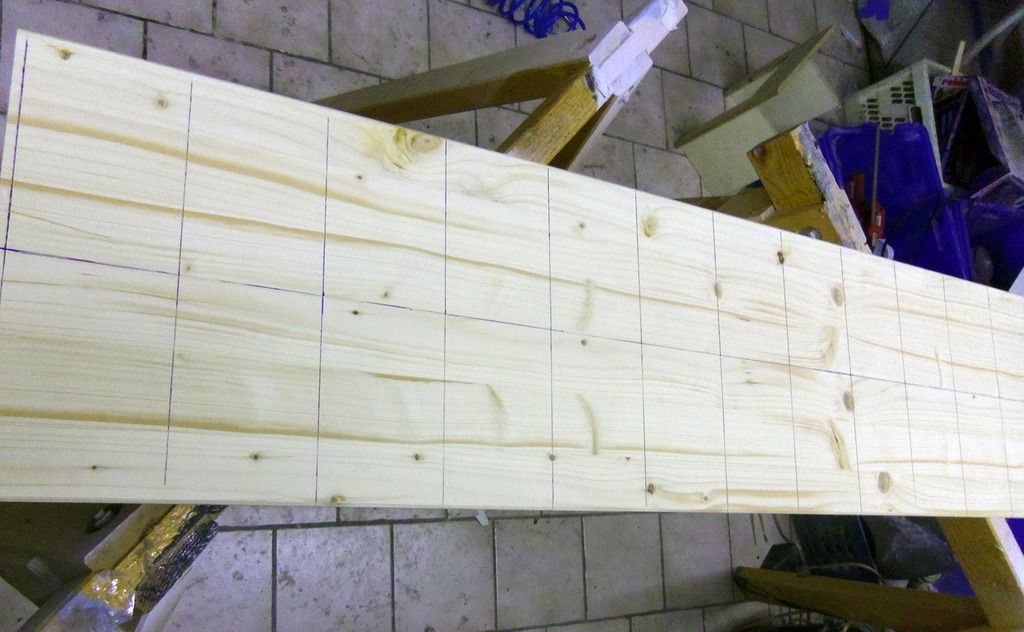
The boat is put upside down onto the board and centered along the symmetry line:
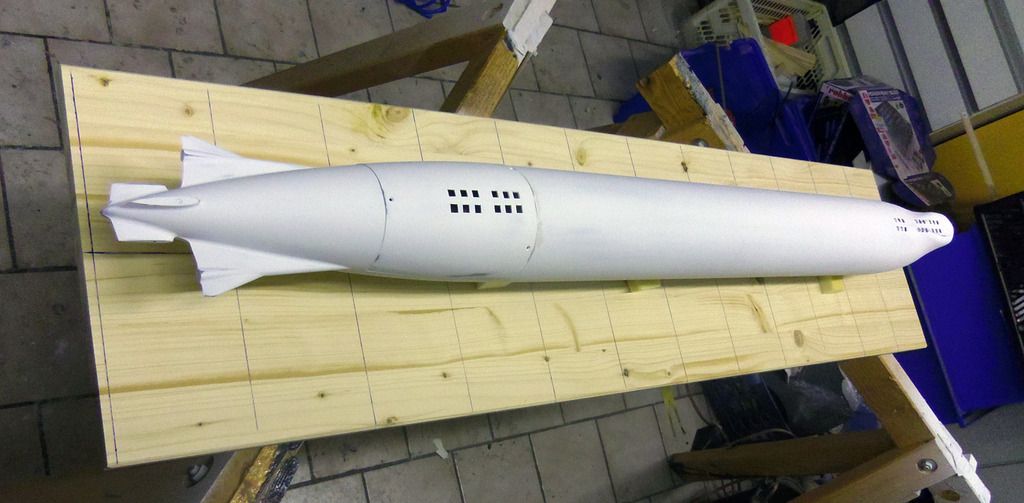
A vertical marking board is built from spare wood. The board is positioned on the segment markings:
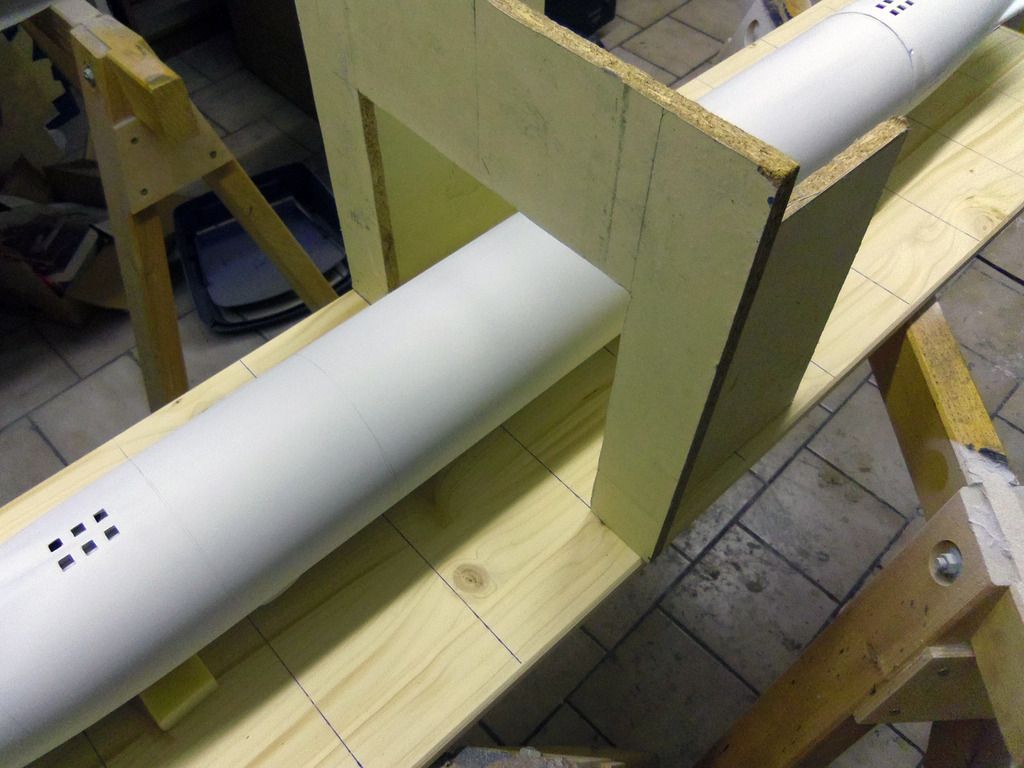
Now the weld line markings can be transferred onto the hull using a pencil:
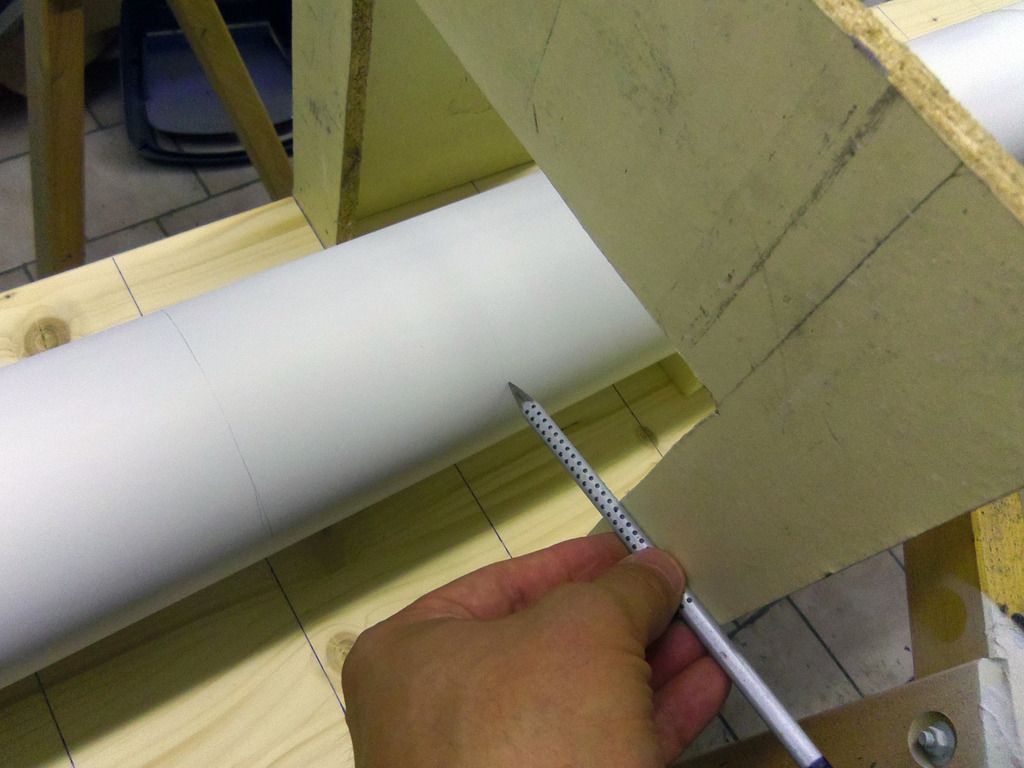
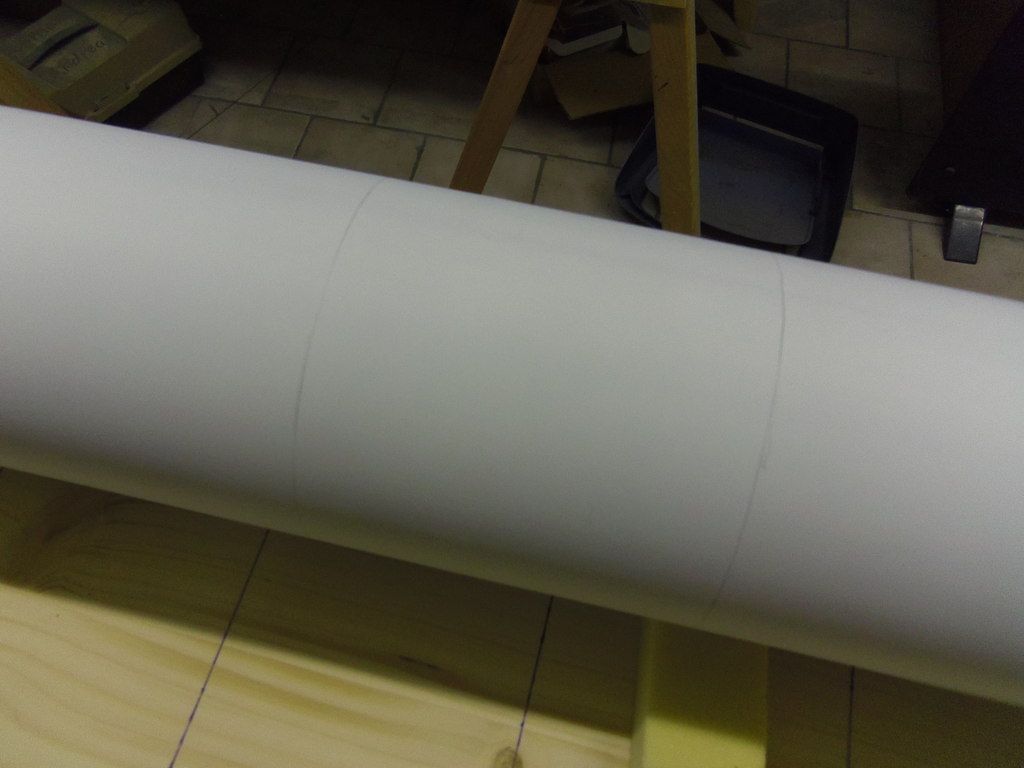
Additional markings are laid down using masking tape and then transferred using a pencil:

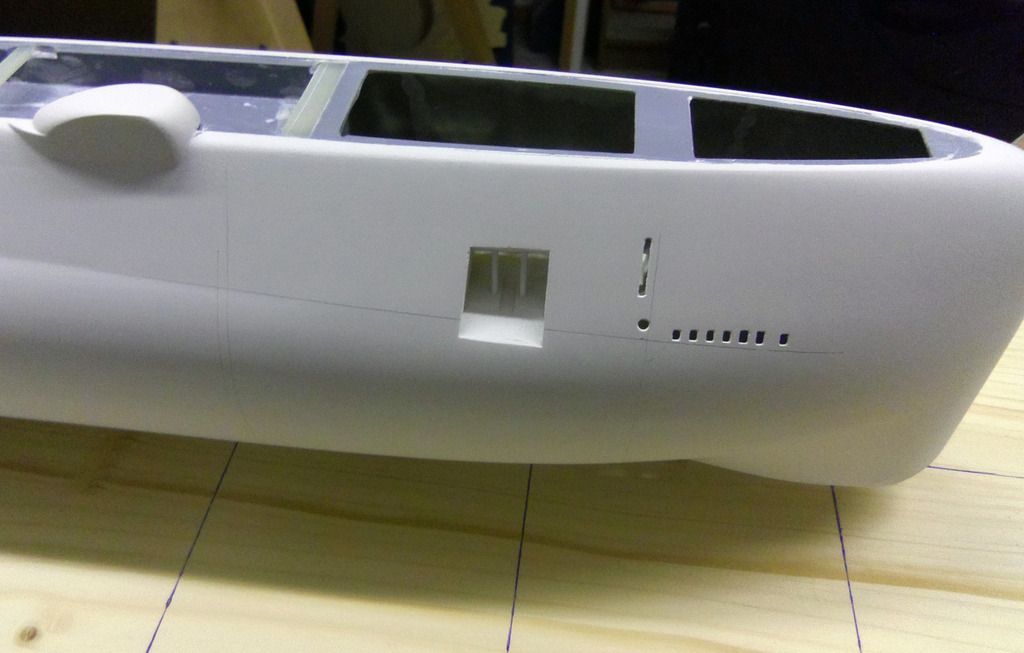
The weld lines are 0.3 mm wide Archer Fine Transfer surface details:
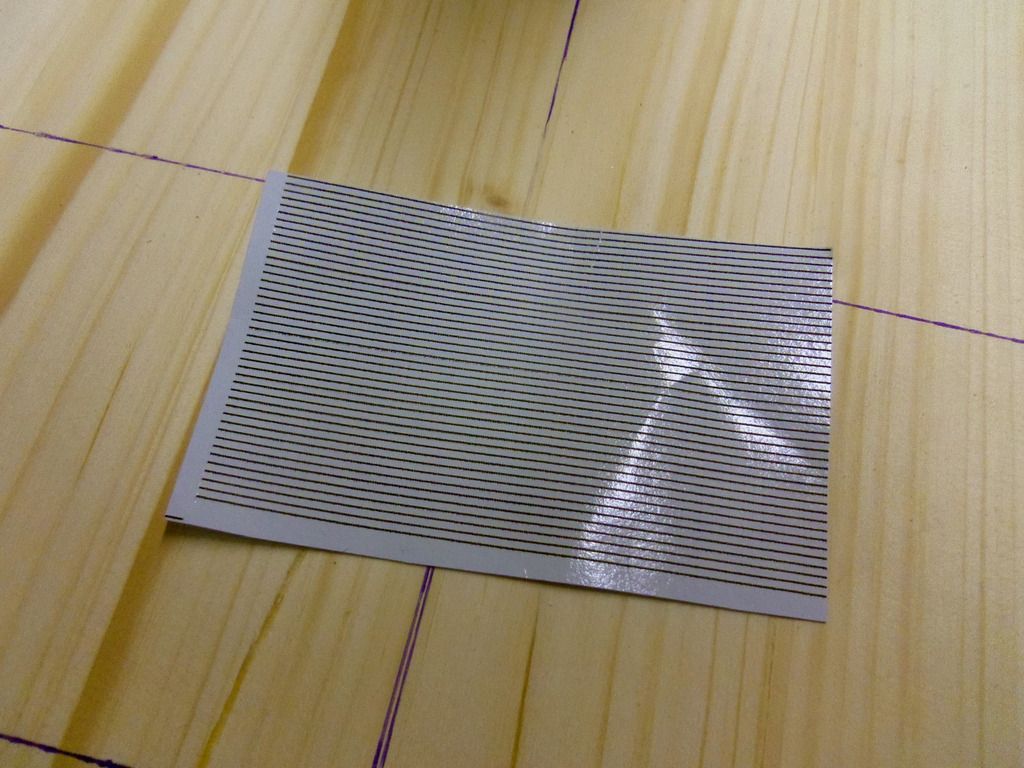
First, the edge of the deck superstructure is emphasized:
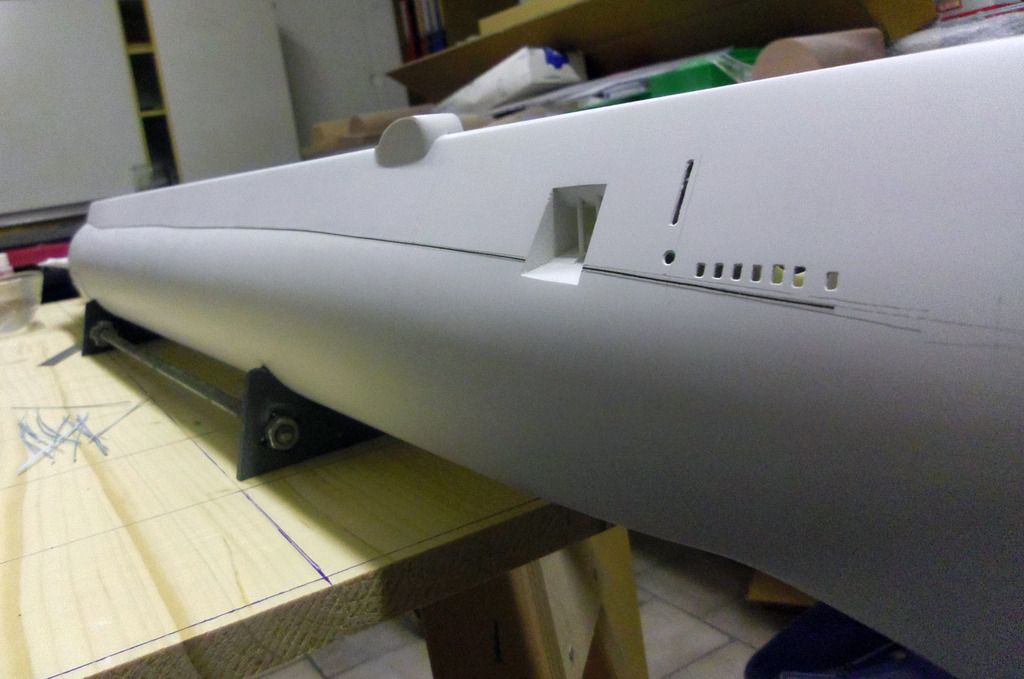
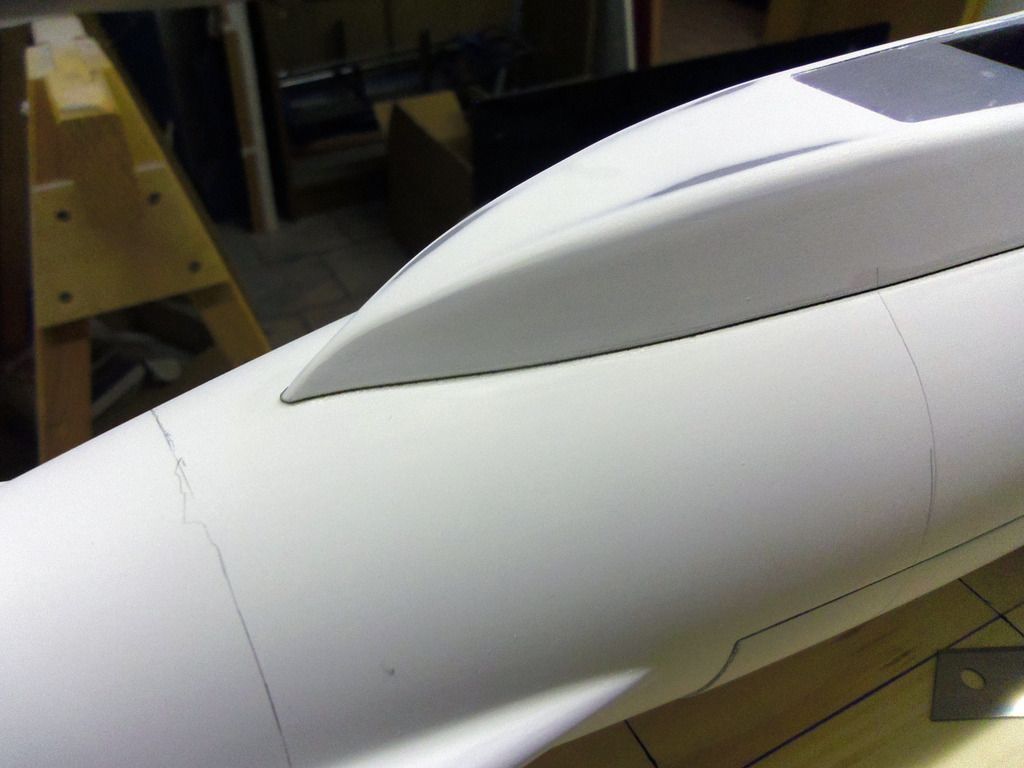
Comment
-
-
The top coat: The boat is painted in the color scheme that the Nautilus carried during the crossing of the north pole; i.e. a two-tone scheme consisting of grey and black.
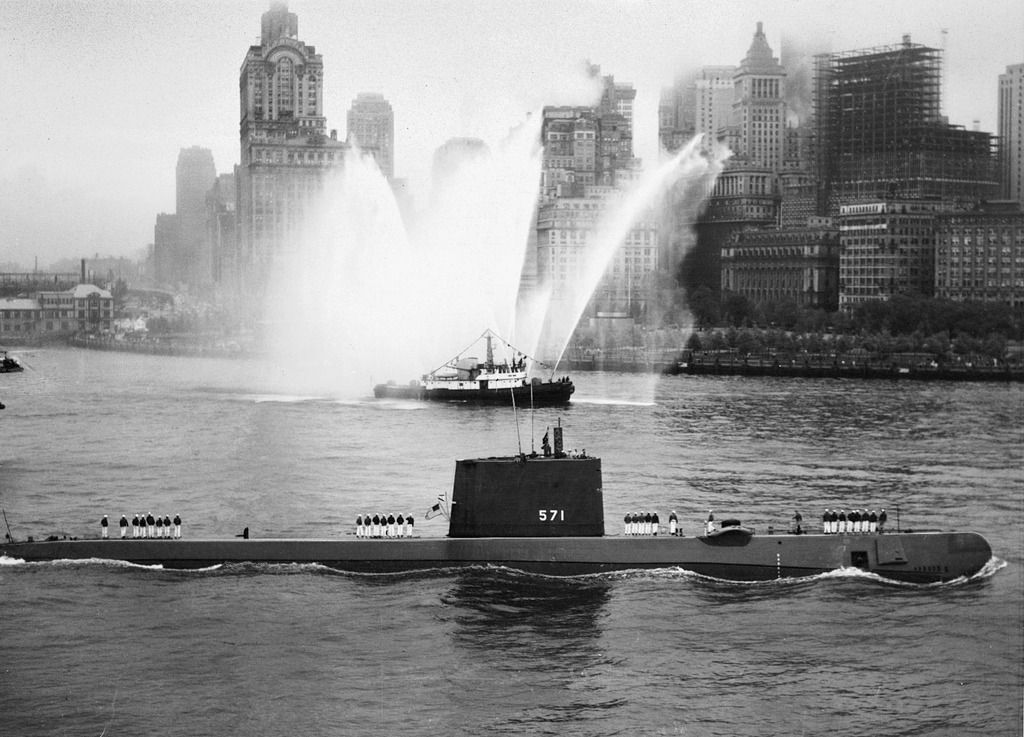
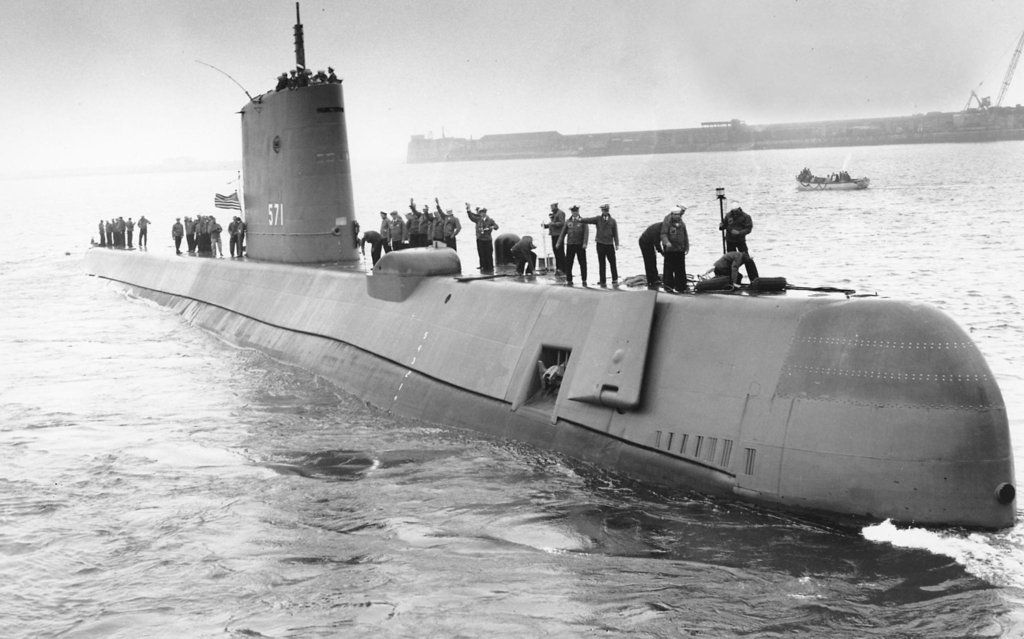
I chose RAL 7042 for the gray. The colors used are Südwest 2-component paints. The coats are high gloss, which will make the application for weathering filters and washes easier. The matt tone of the boat will finally be applied using a matt clear coat.
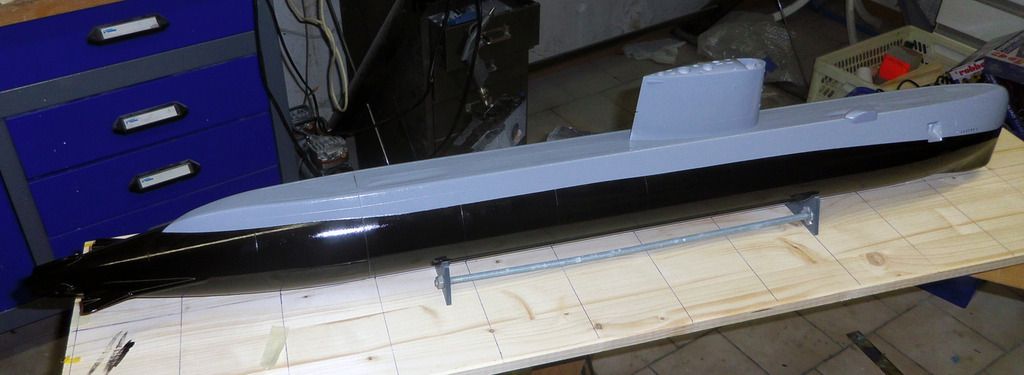

Before the decks can be painted black as well, the hatches have to be assembled. The hatches are cast of pu-resin, the hand wheels are photo-etched parts.
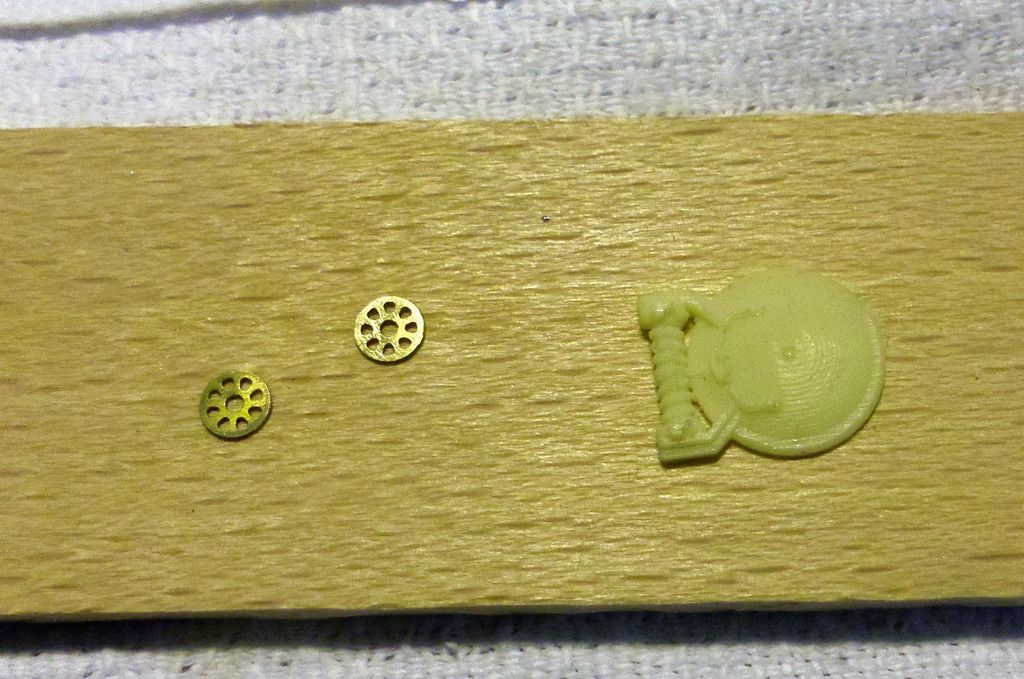
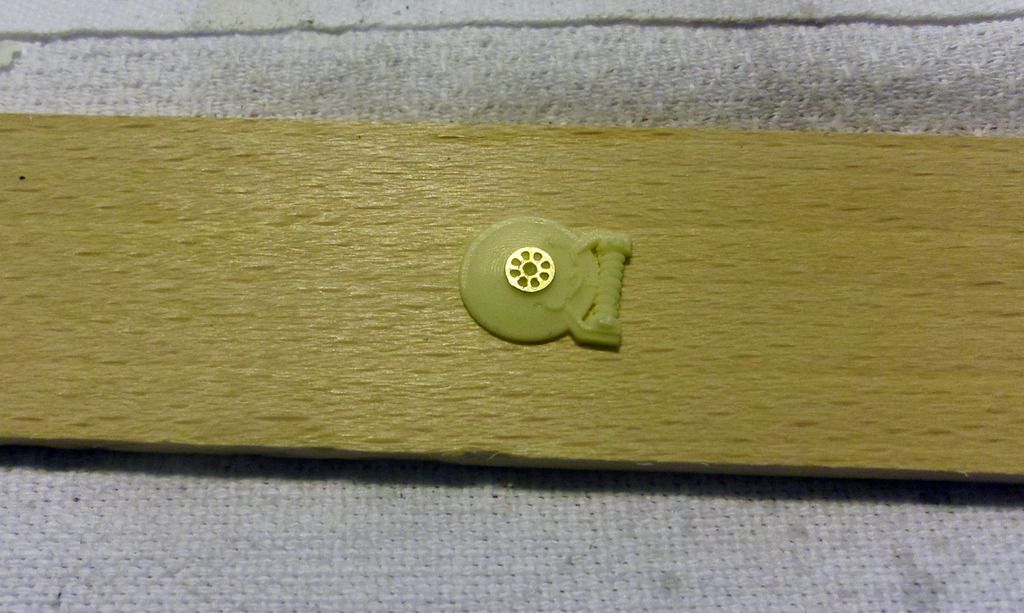
Comment
-
The decks are painted black after the hatches have been glued onto the decks. Then the base coat gets weathered. I started with the weathering of the surfaces beneath the waterline. Therefore I applied the method of my US colleague David Merriman:
1.) Mask the waterline using masking tape
2.) Tap on toothpaste with a round brush
3.) Lightly paint over the whole surface with white
4.) After the color has dried, remove the toothpaste with a damp cloth
5.) Tone down the effect using white and black
6.) The algae and dirt at the waterline is airbrushed on using white and green
7.) Remove masking tape
I went for a moderate effect as I depict the boat in a young stage of its career,

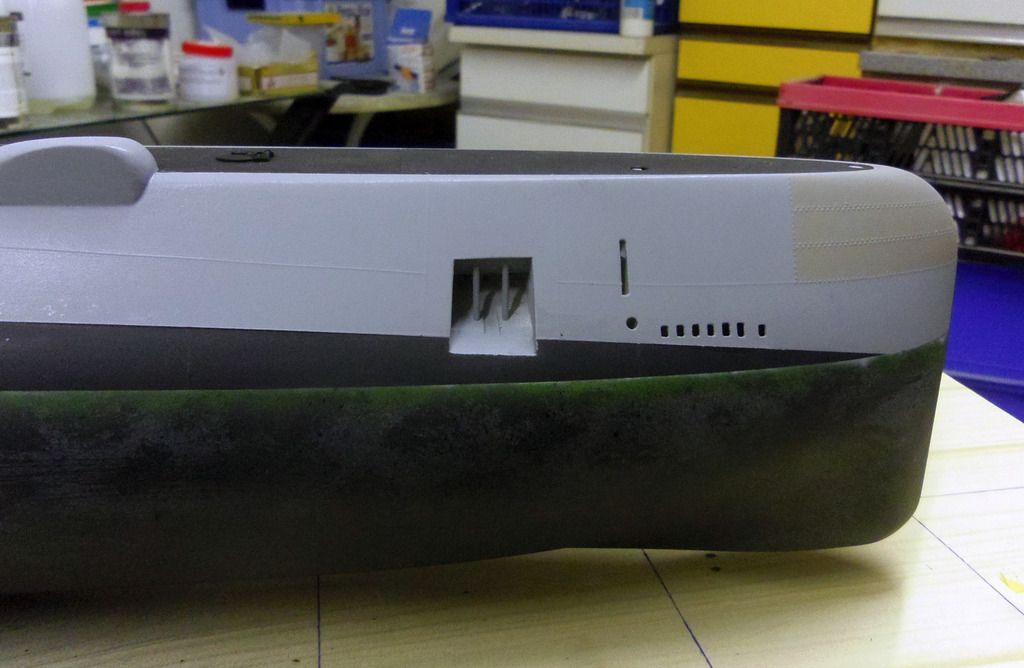
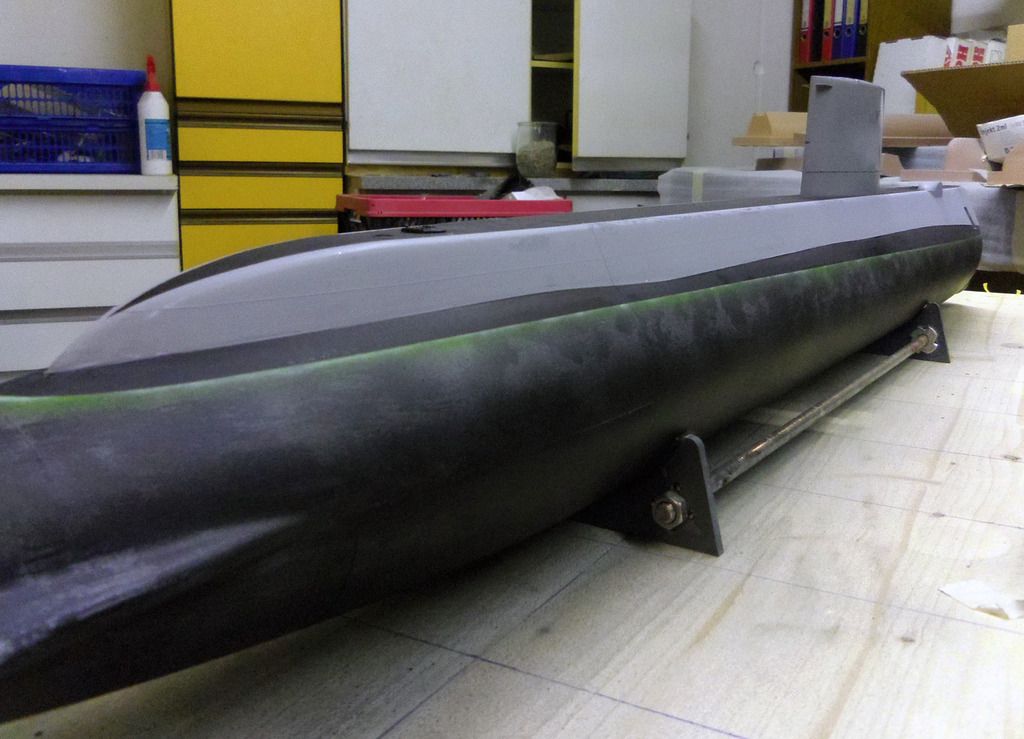
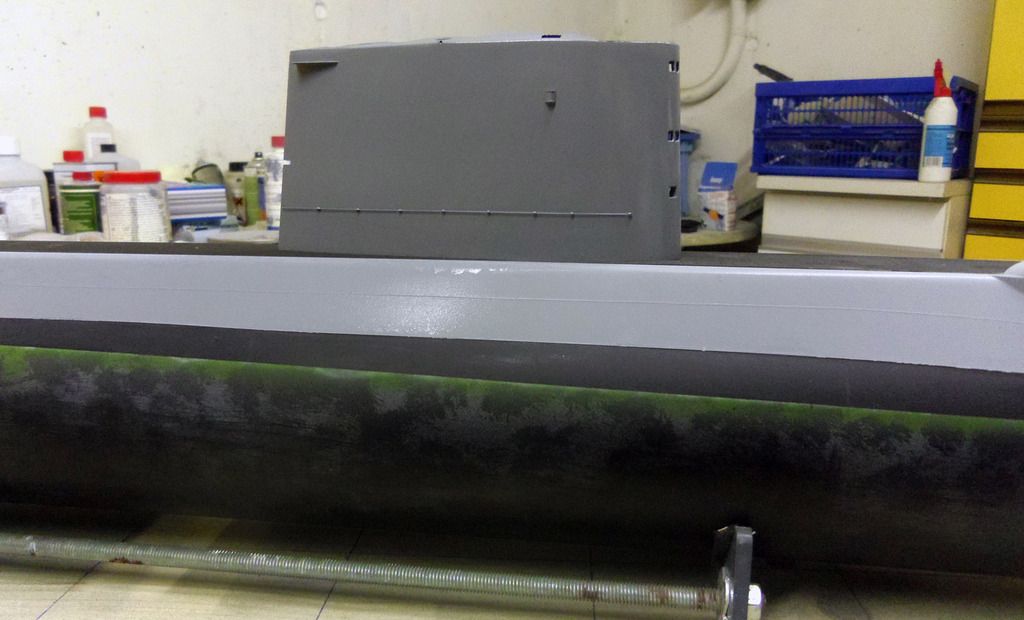
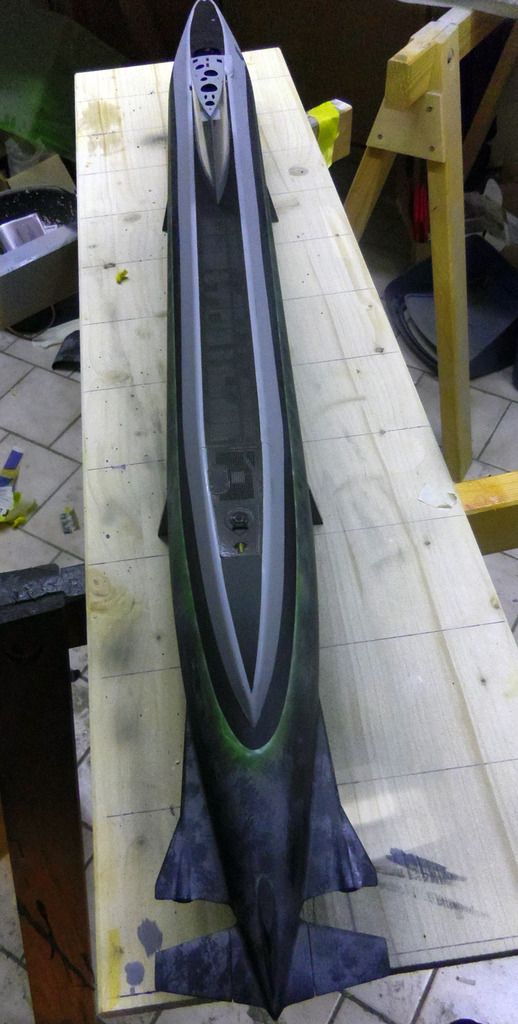
Comment
-
On it goes with the aging of the base coors. I mainly use filters and washes by the company M.I.G.. A slow process where one applies alternate coats of ultra-thinned colors. The curing times between the cotes takes quite some time, but it’s worth the effort. In addition the ship numbers are airbrushed using the photo-etched stencil.

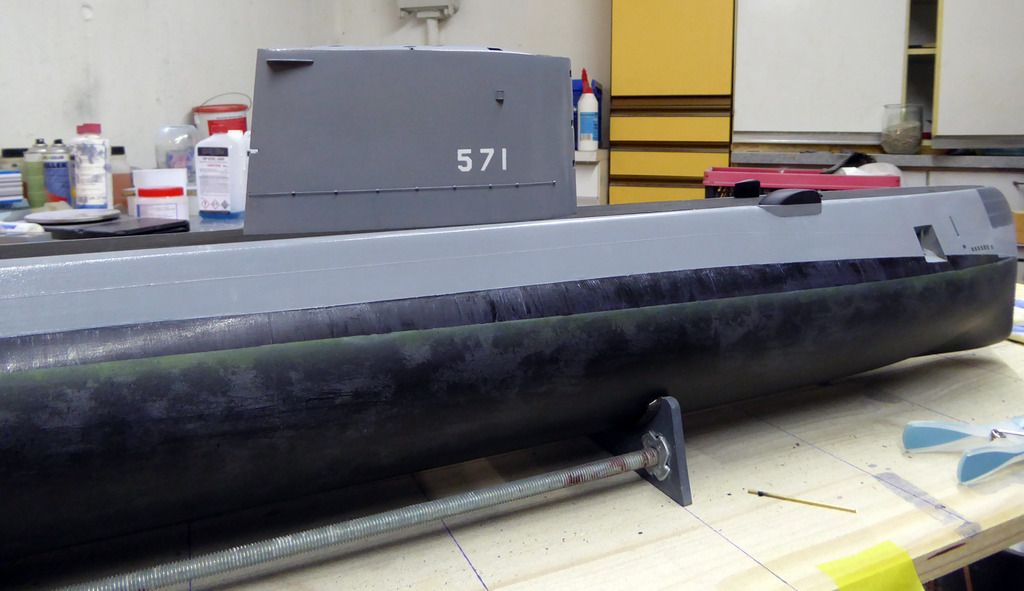


The bridge and the bow planes are painted as well:
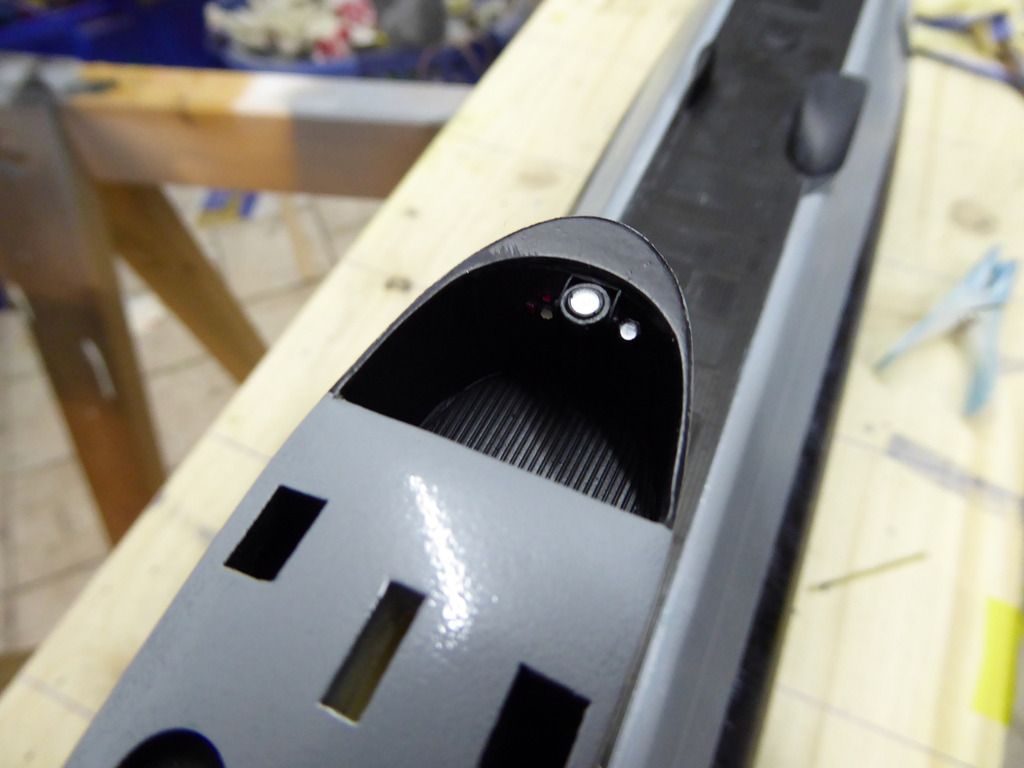
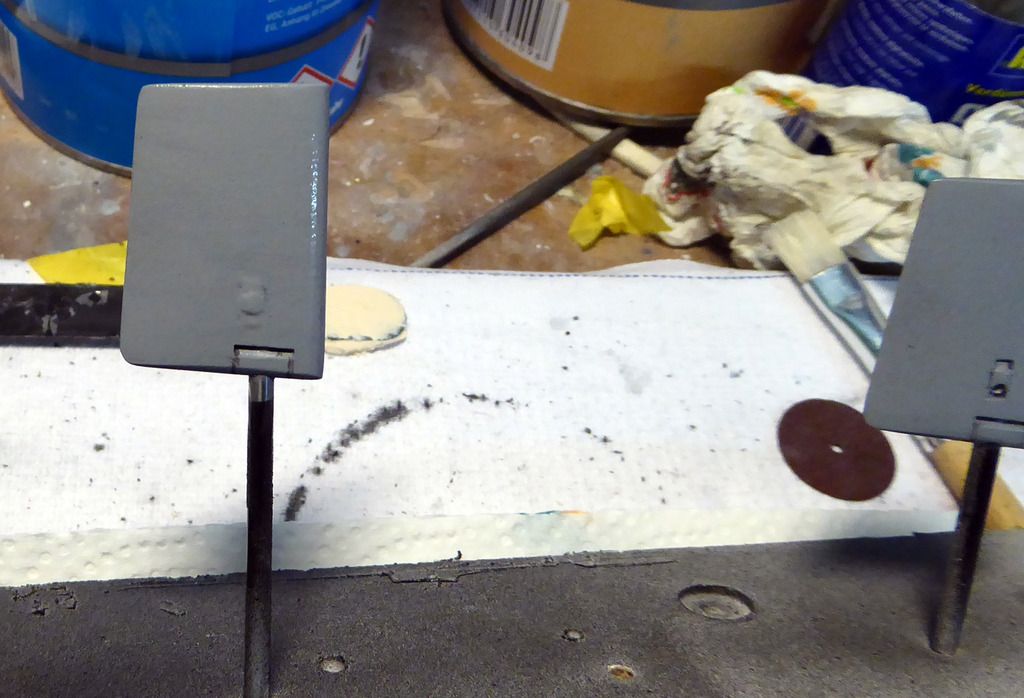
Comment
-
First Class! Looks Real Good. Can you tell me why the demarcation line between the grey and the black is not straight right above the water line? Im sure its that way for a reason.IT TAKES GREAT INTELLIGENCE TO FAKE SUCH STUPIDITY!Comment
-
Nautilus has a circular hull and a trapezoid shaped superstructure that carries the deck. The superstructure was painted gray and the circular hull black. The waterline does not coincide with the demarcation line of circular hull and superstructure.


Comment



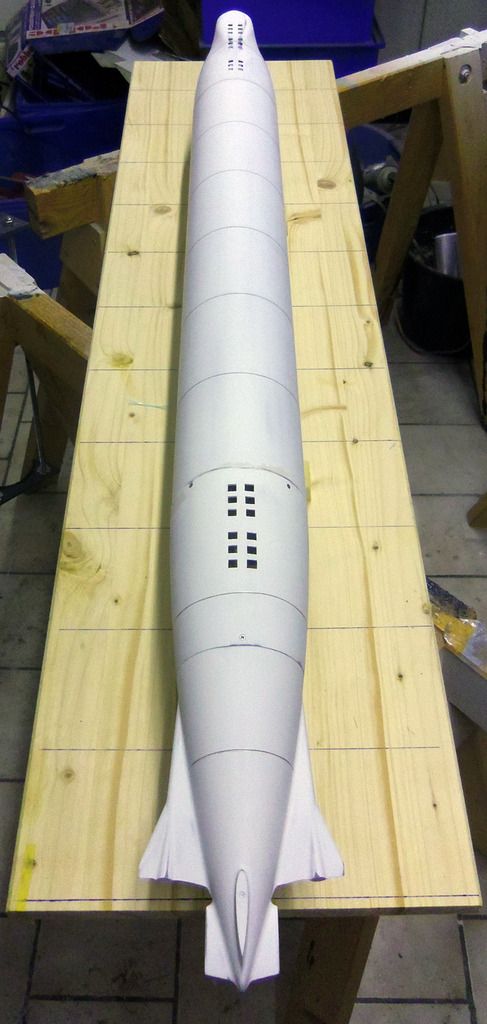
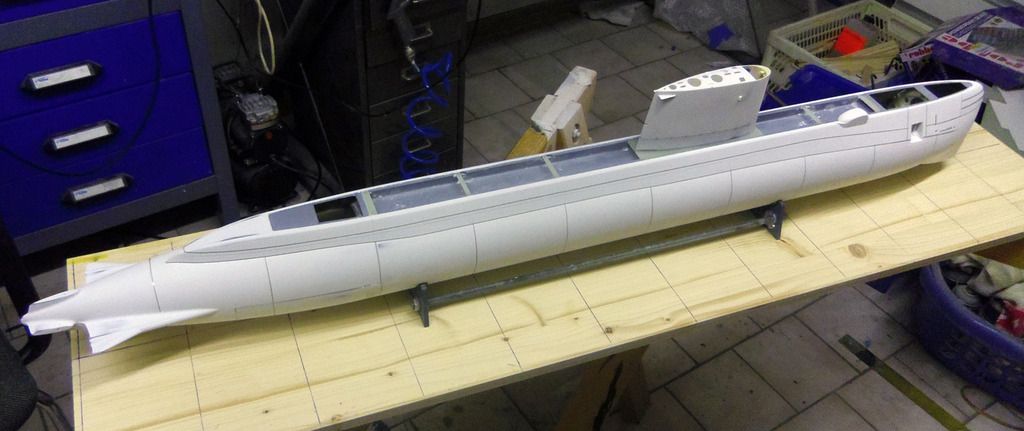
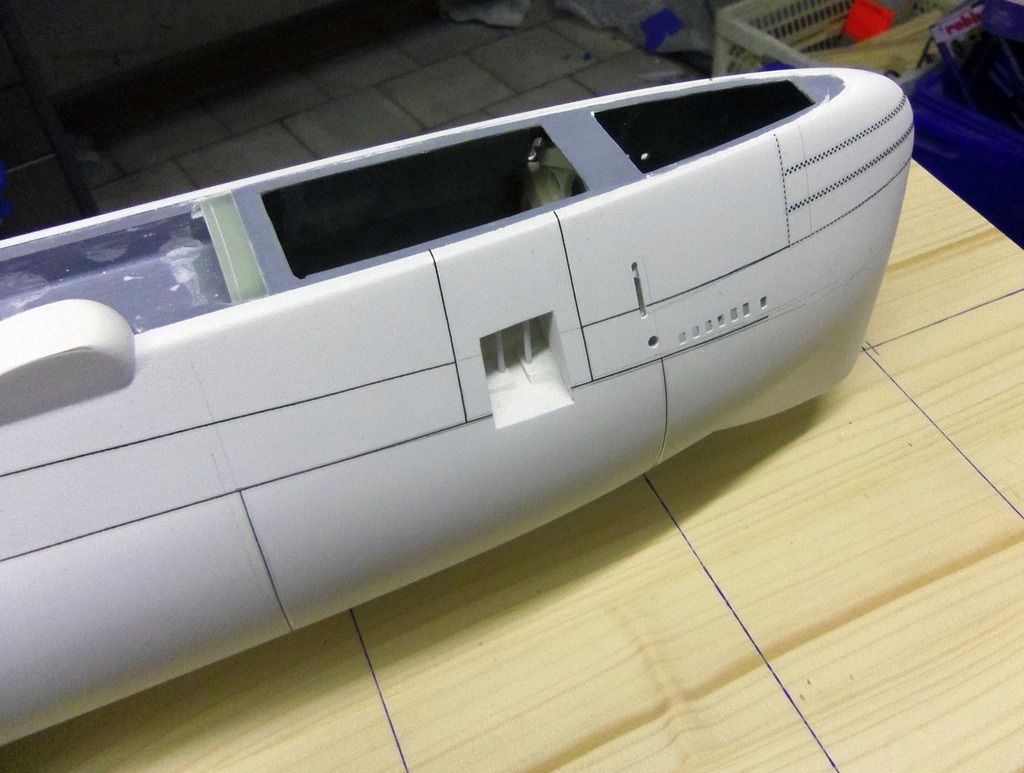
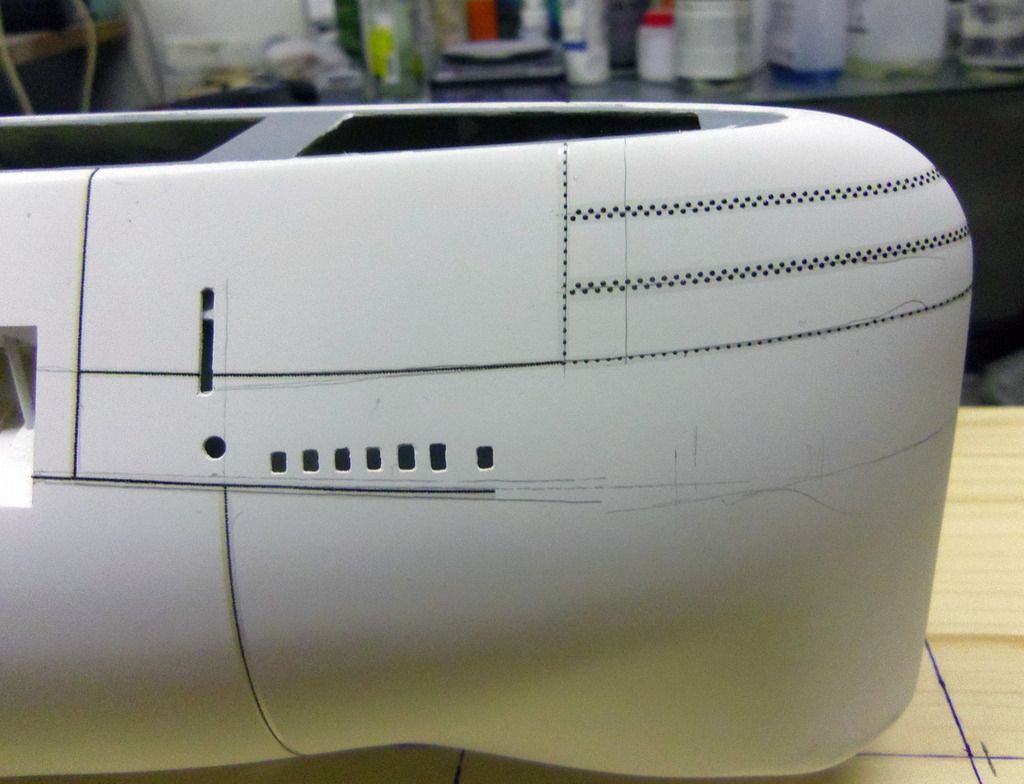

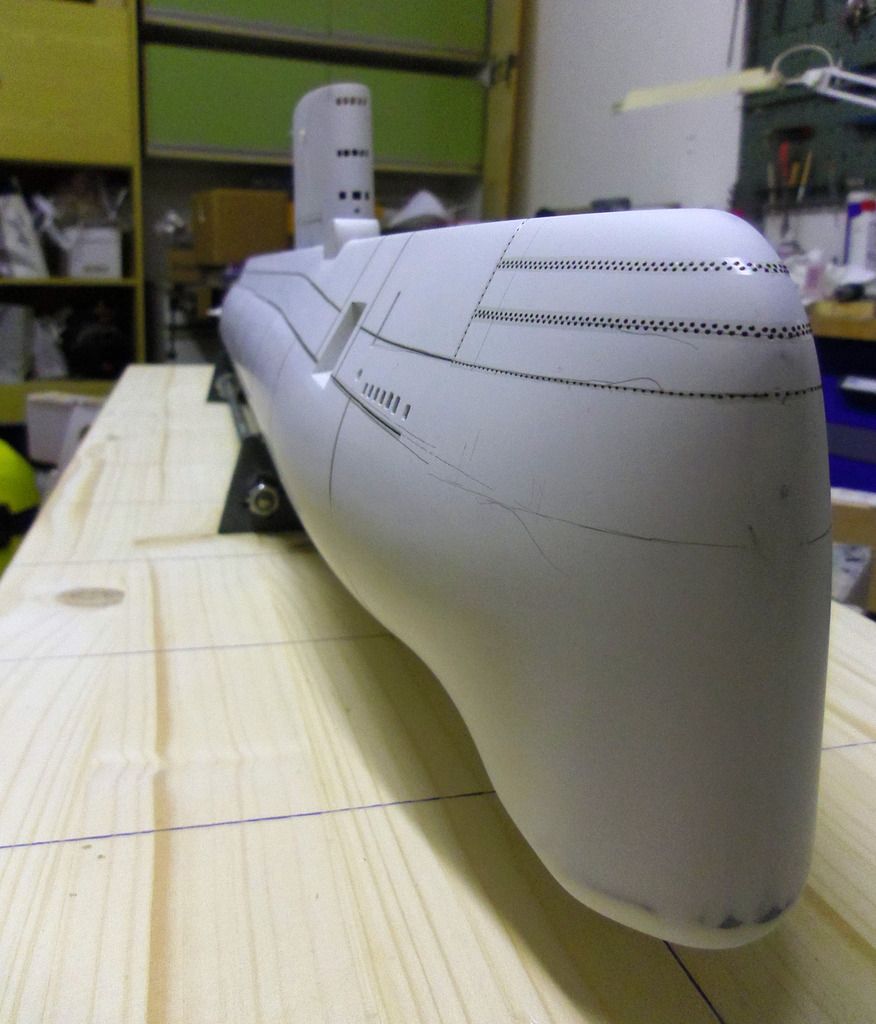
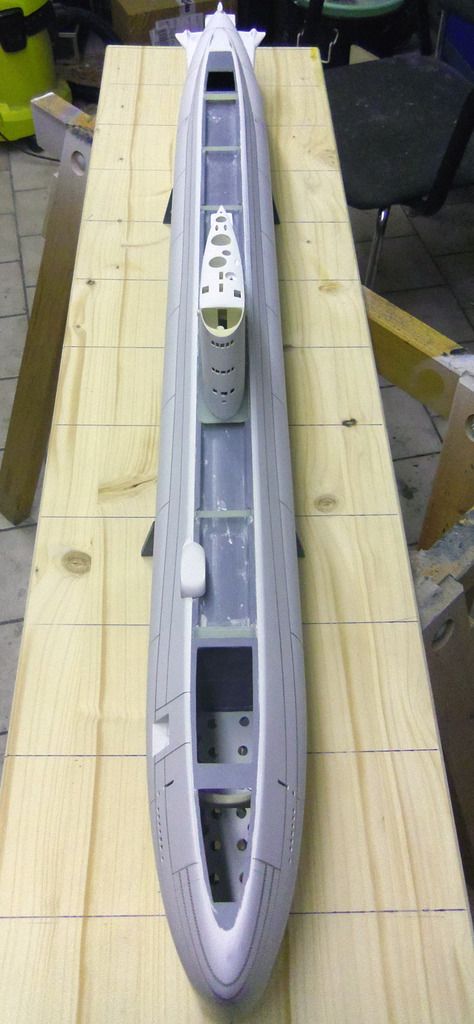

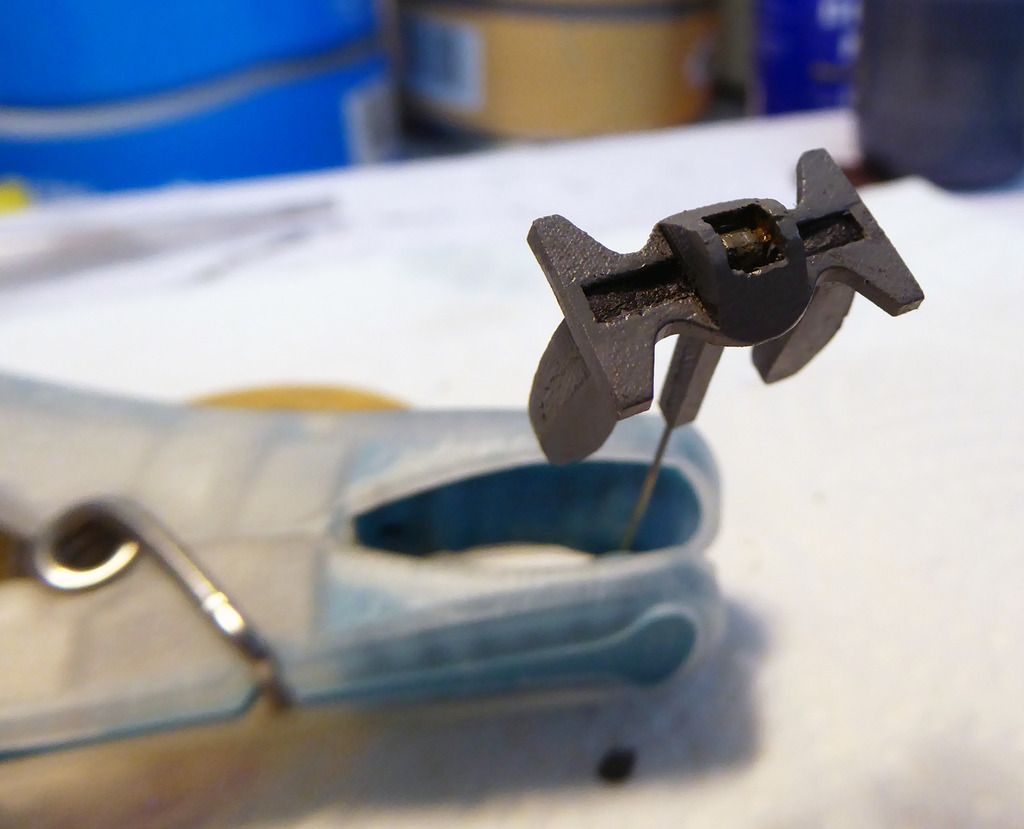
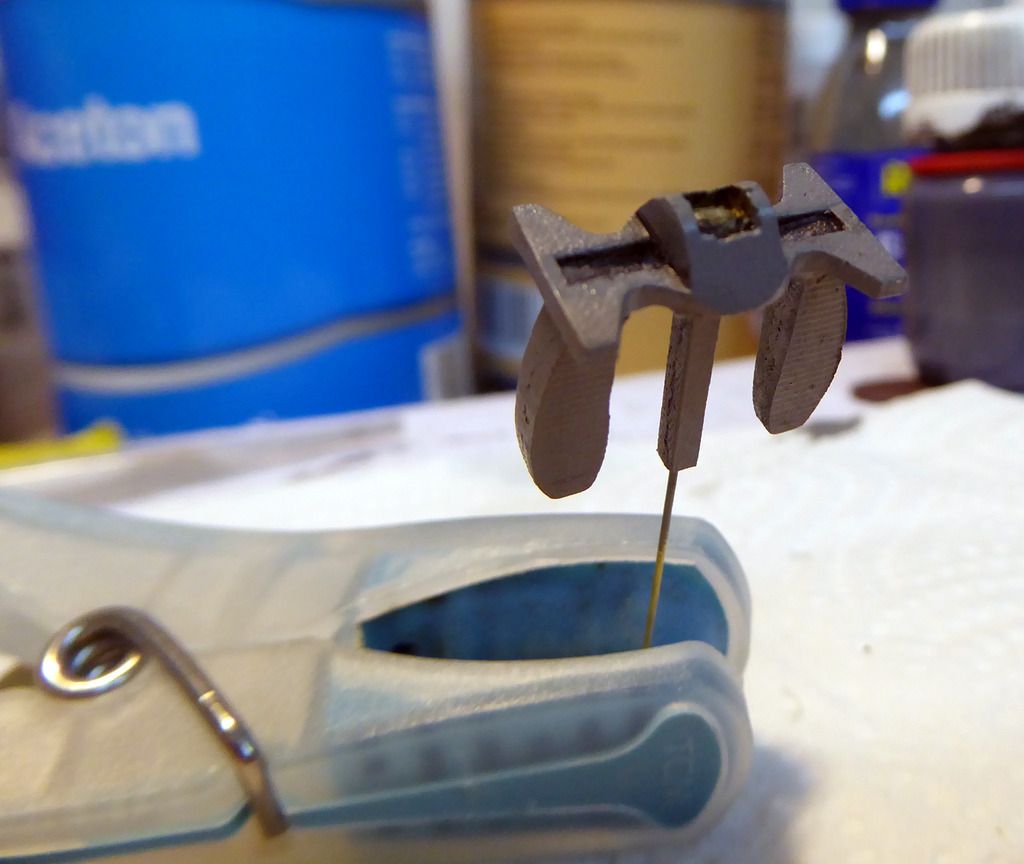
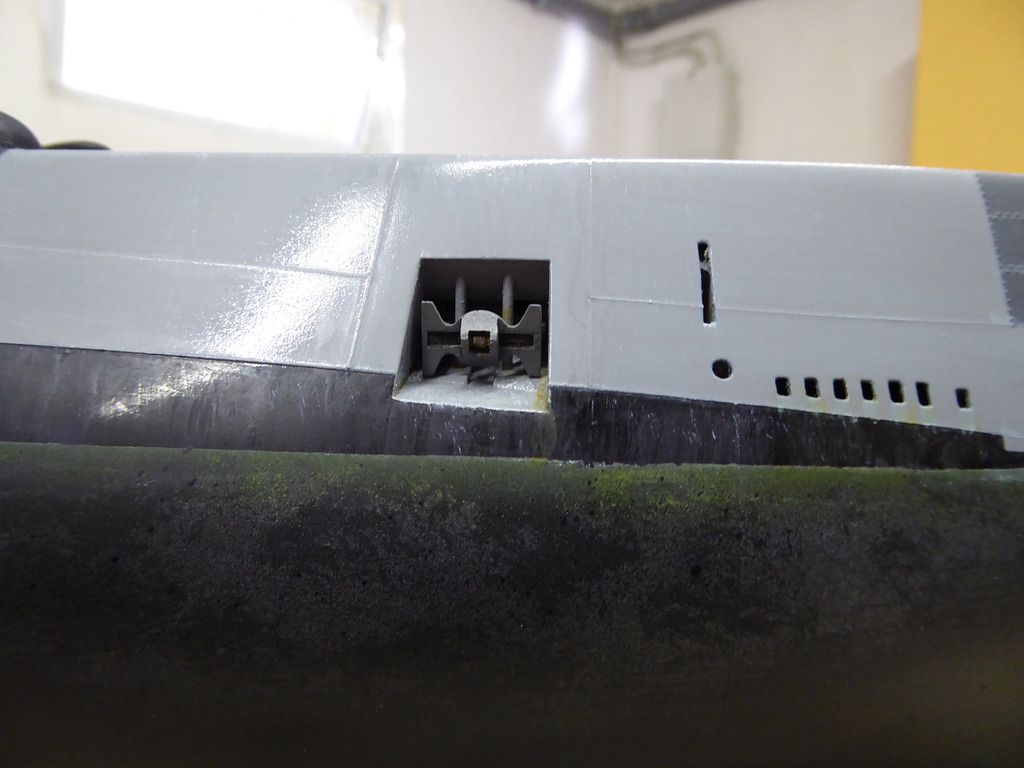
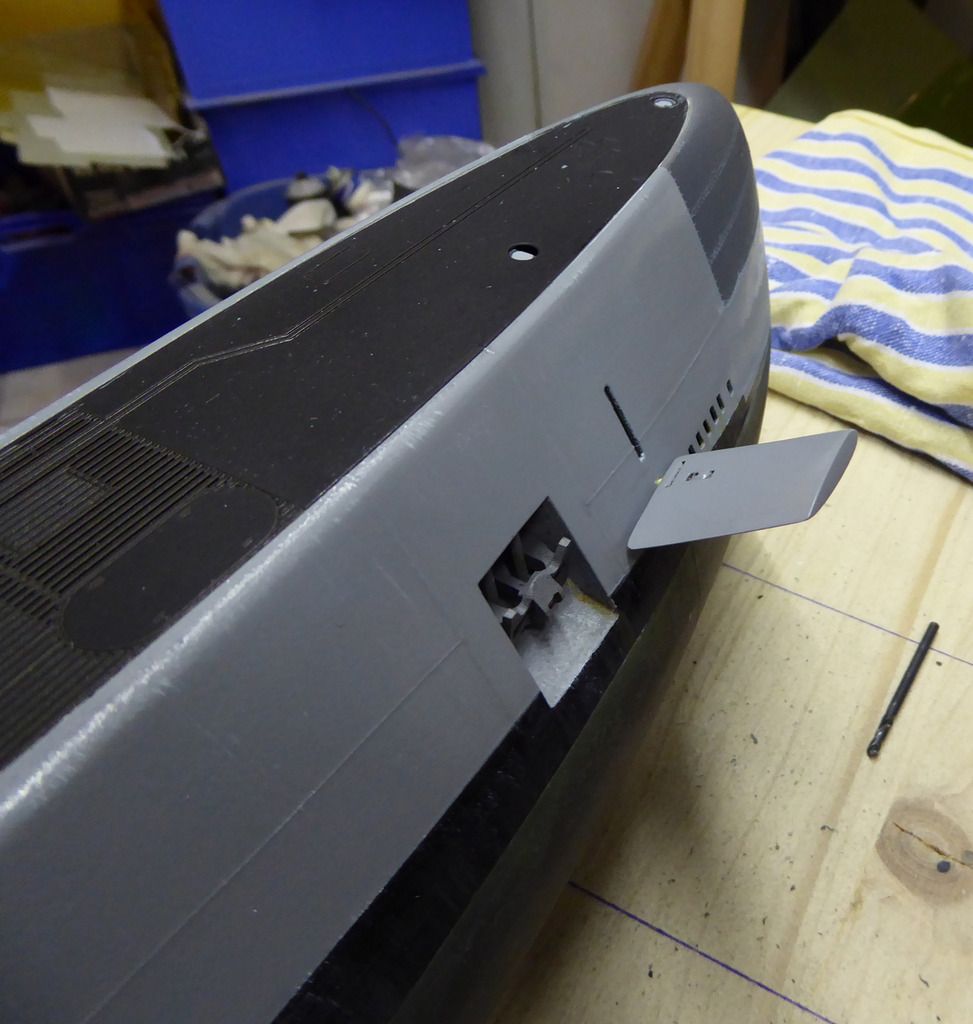

Comment